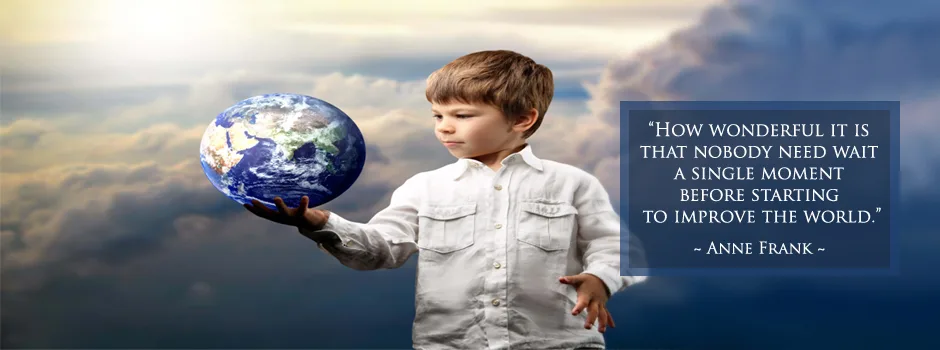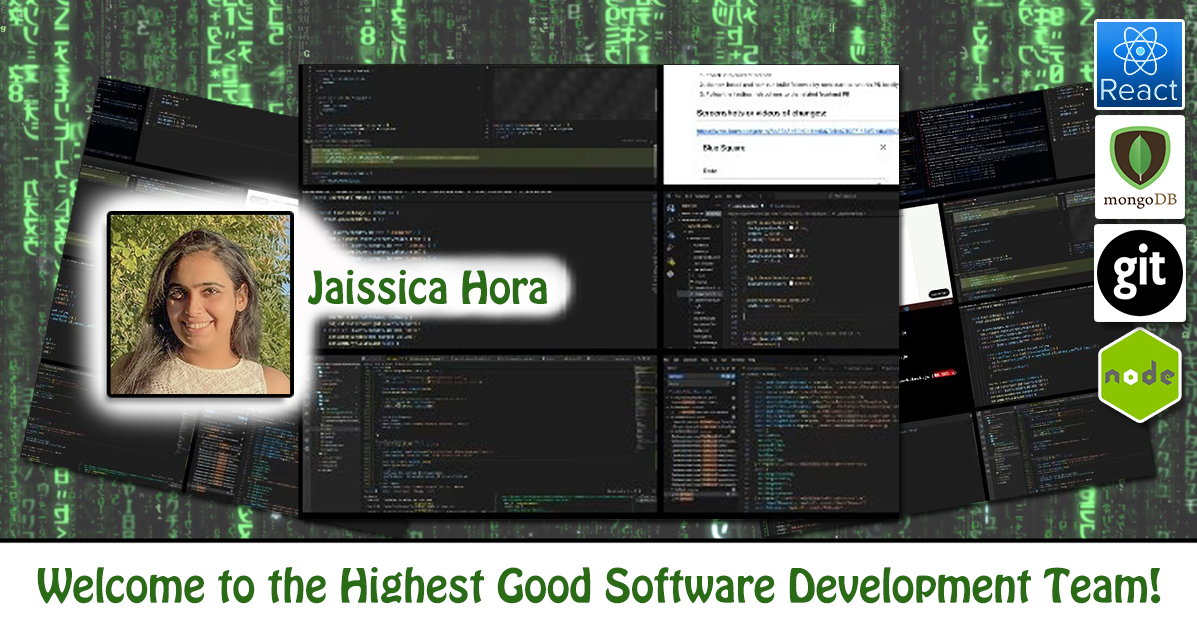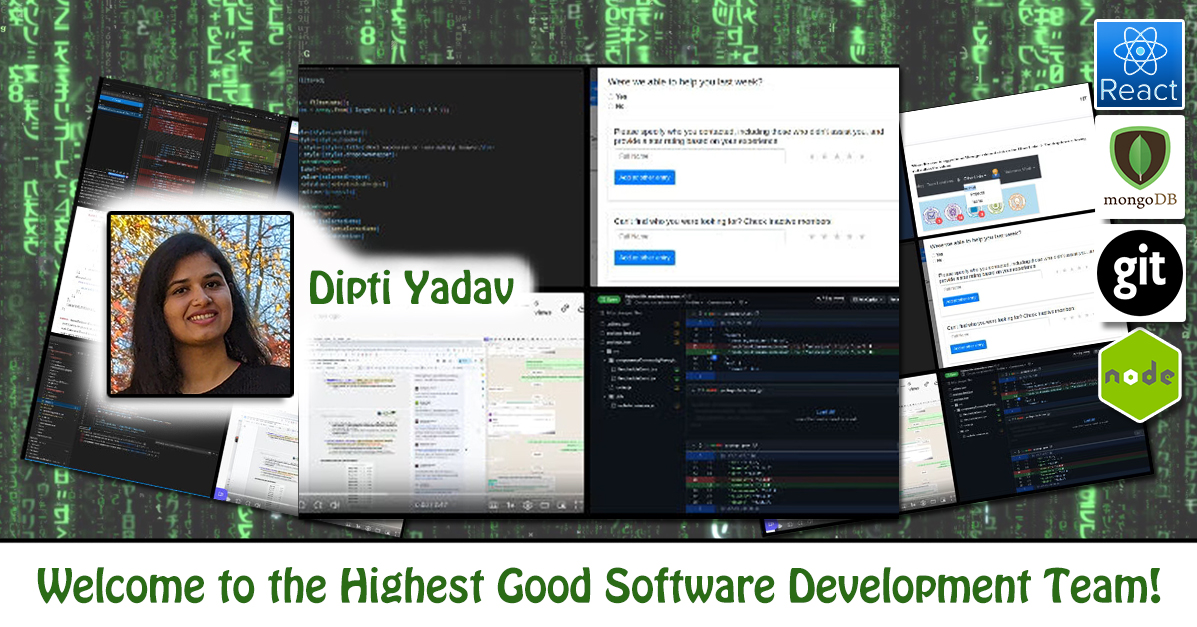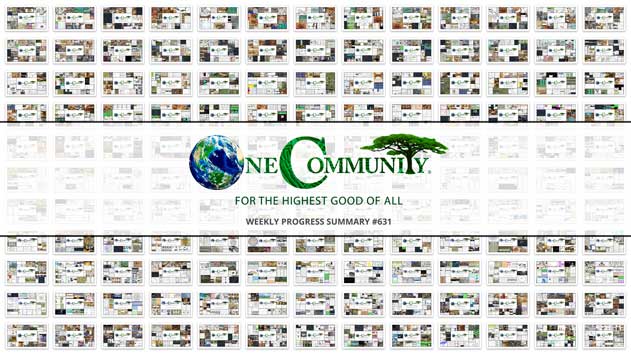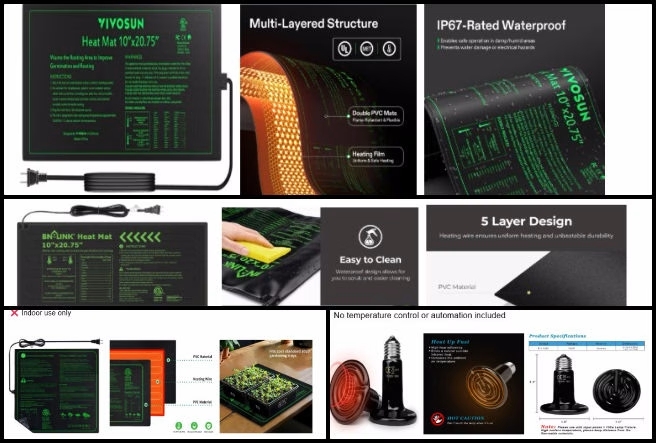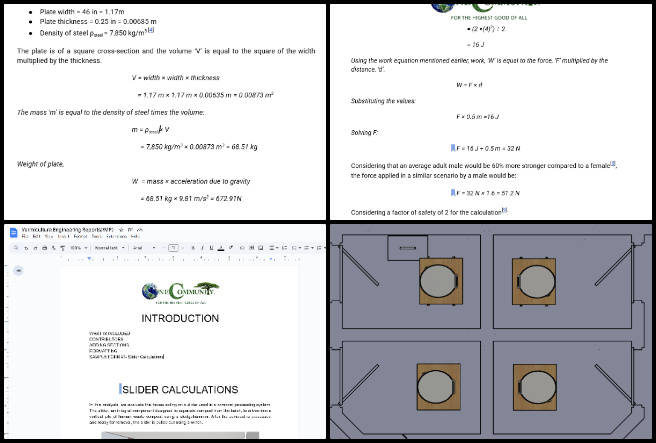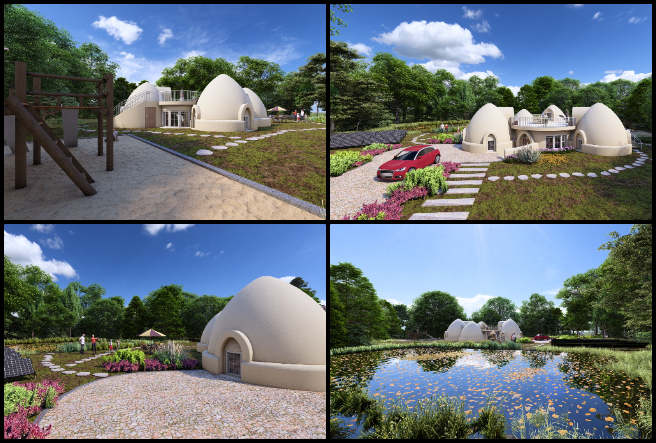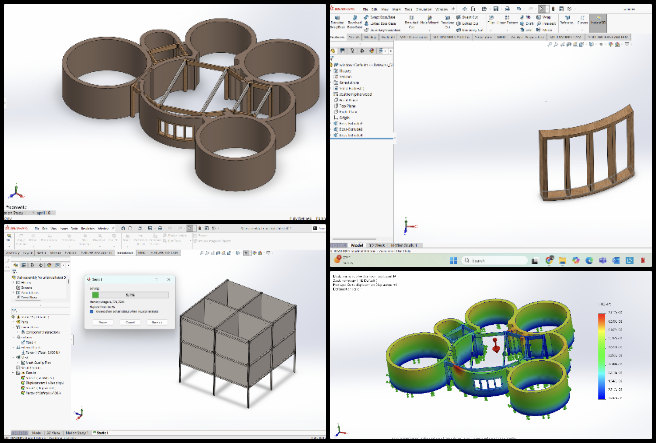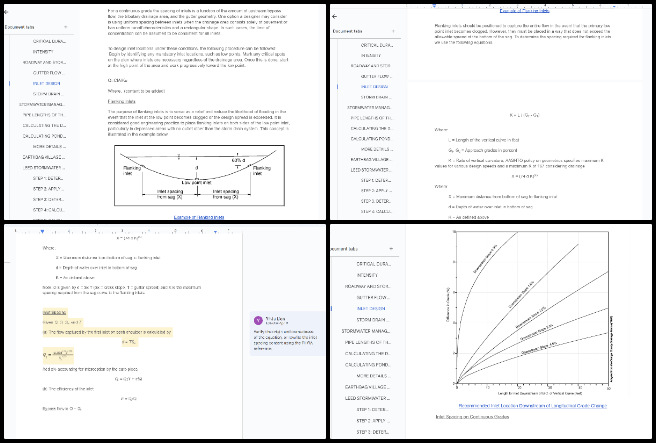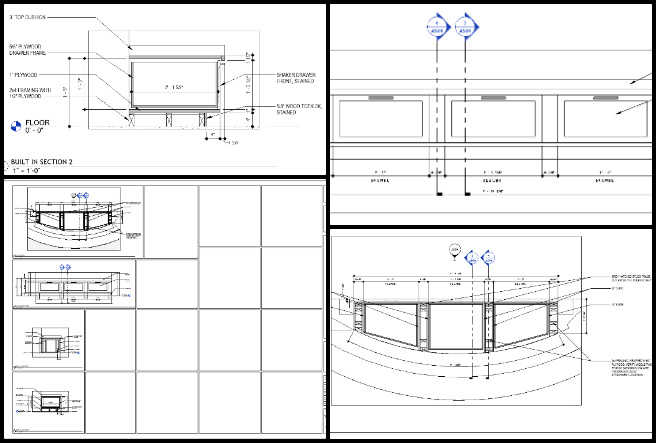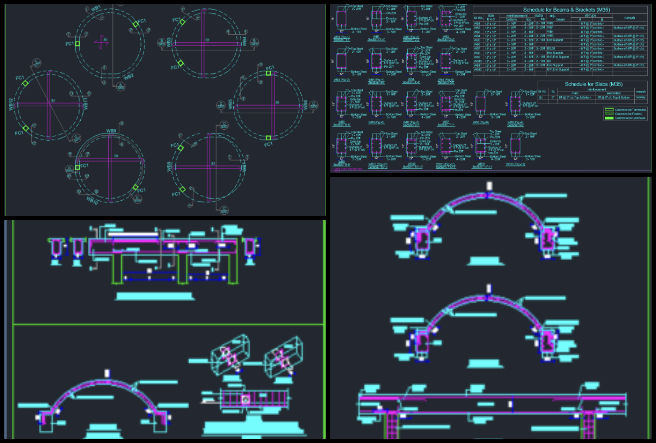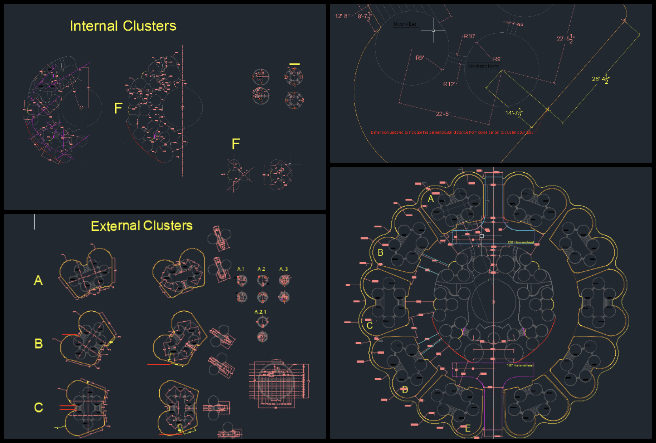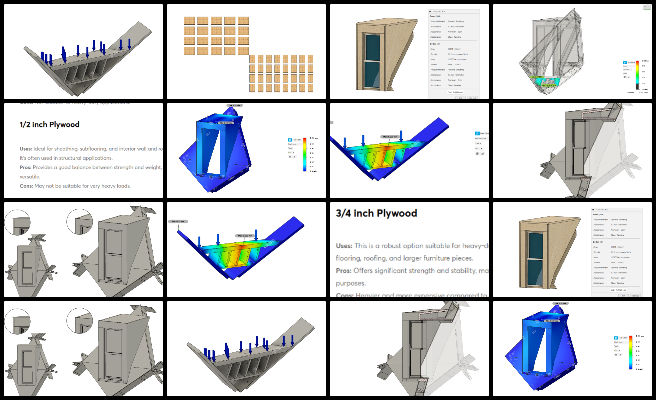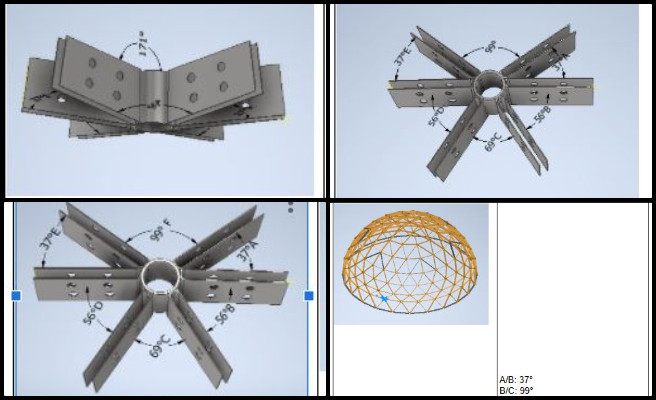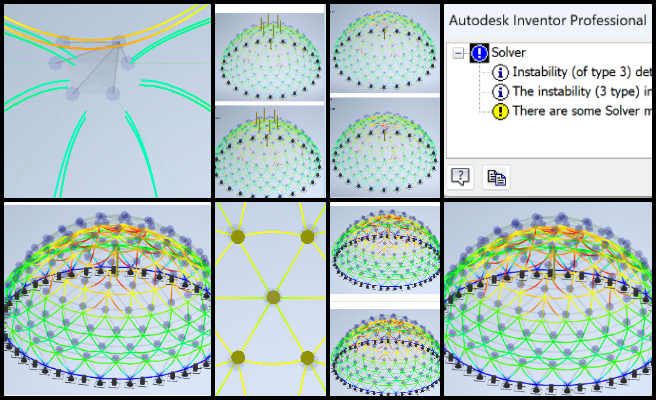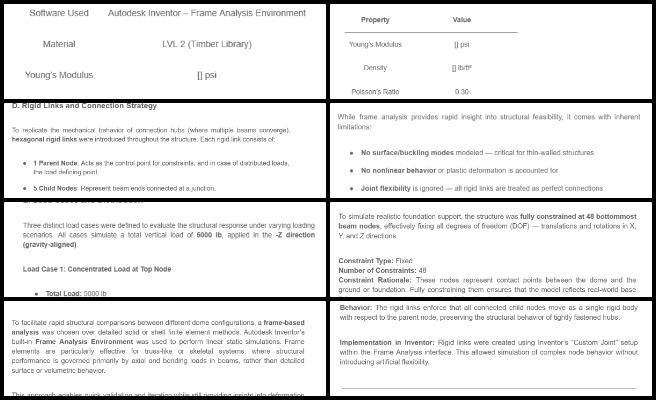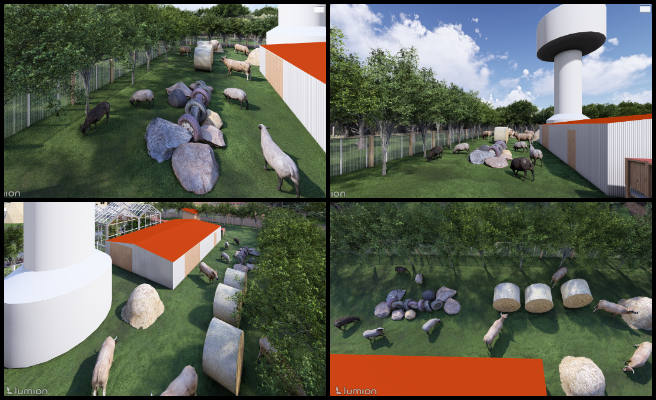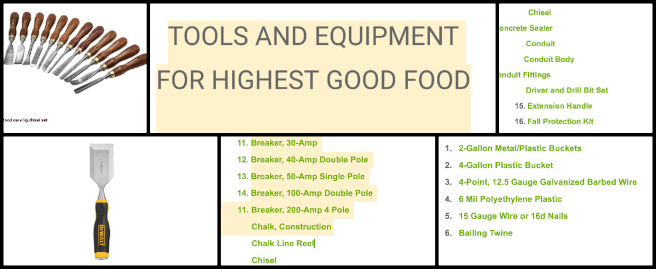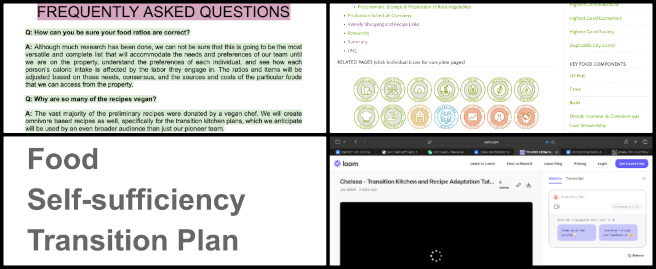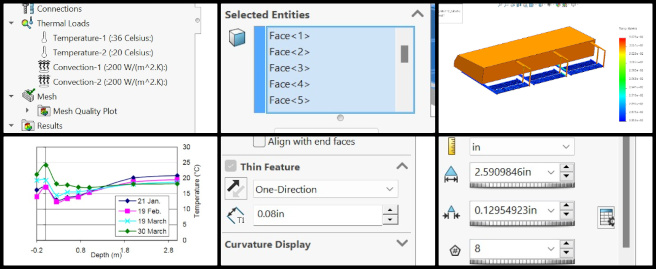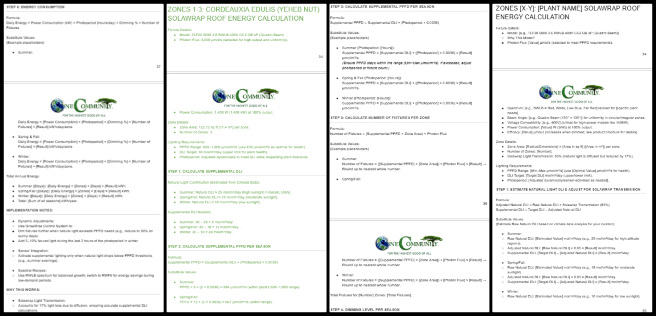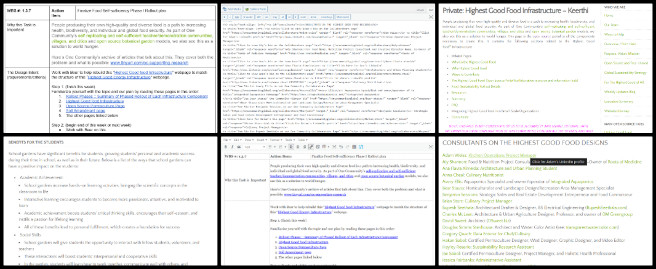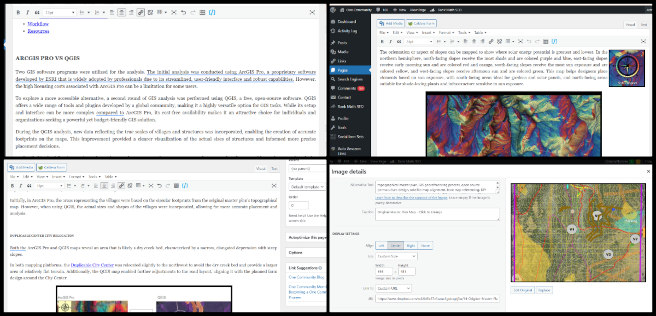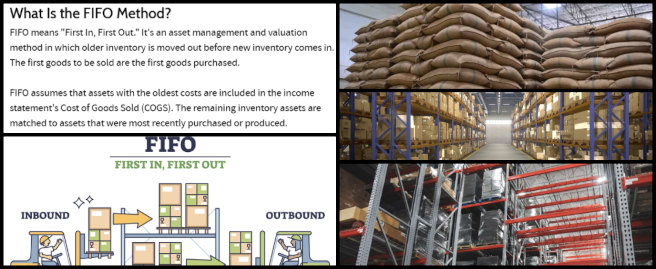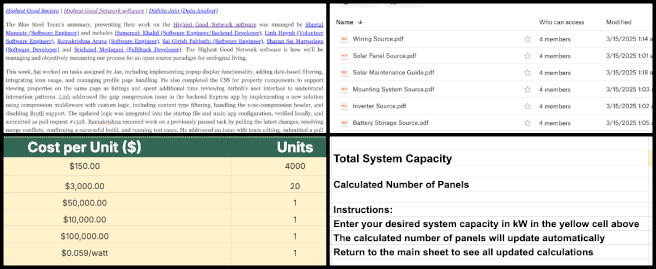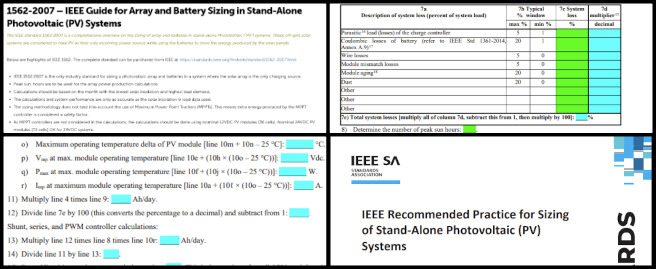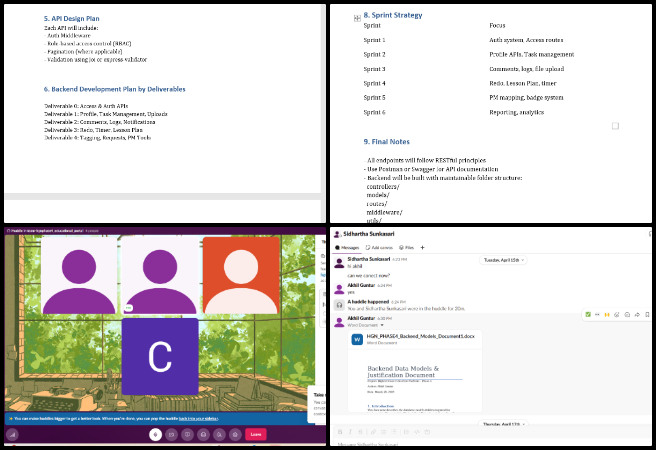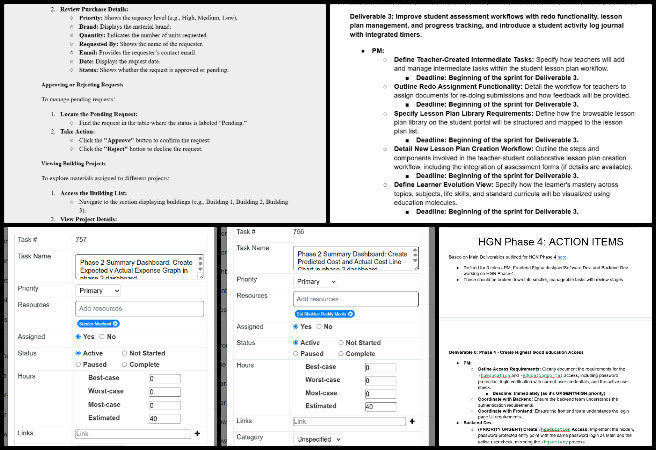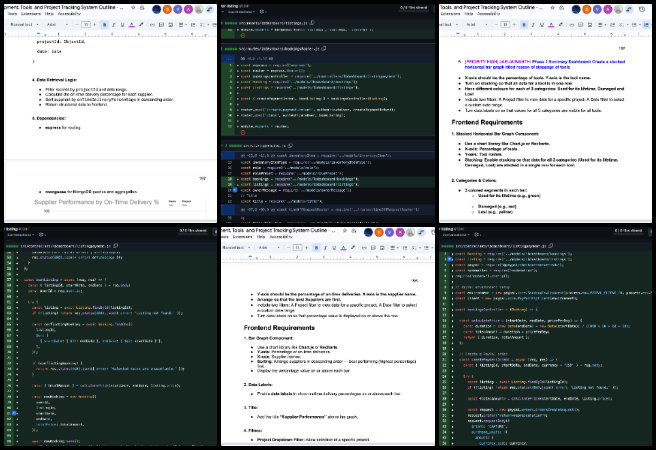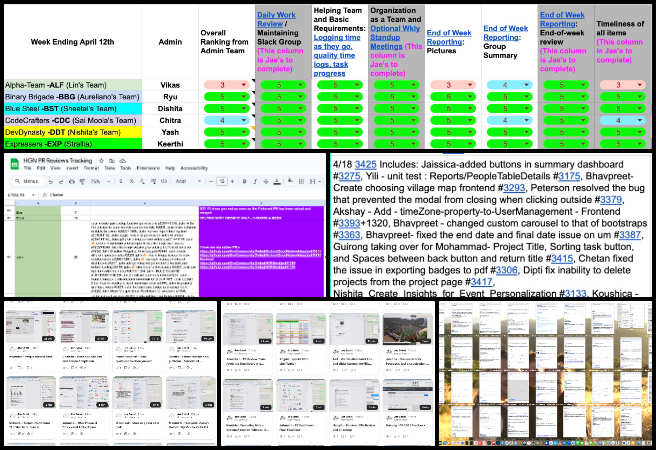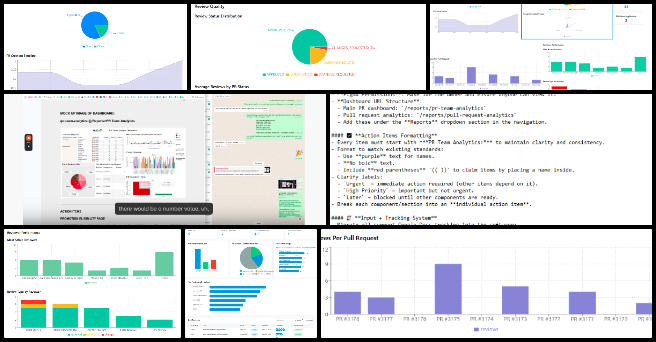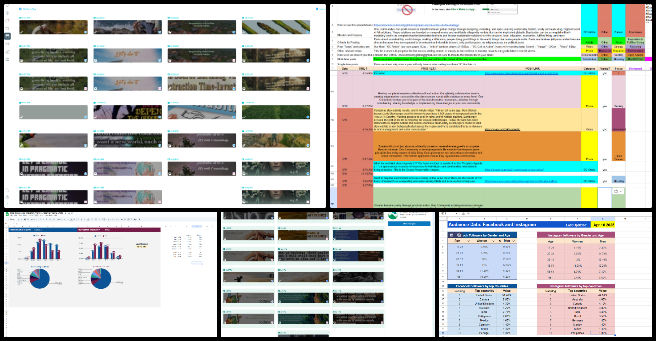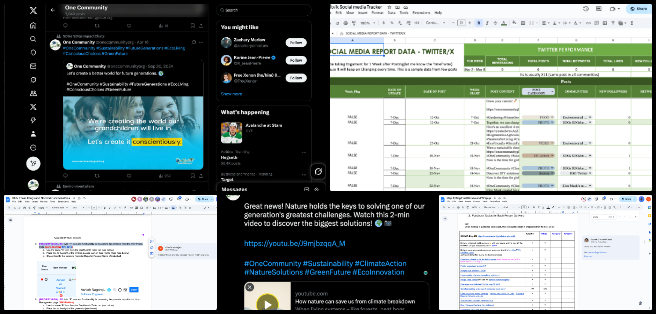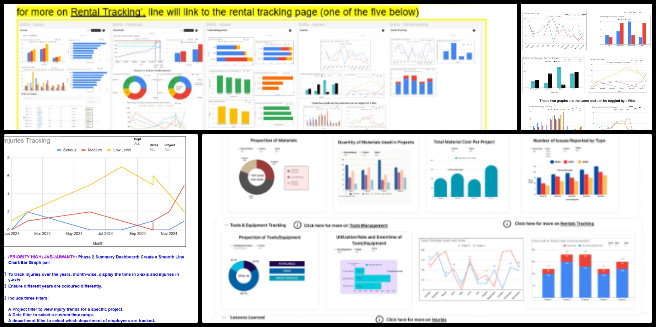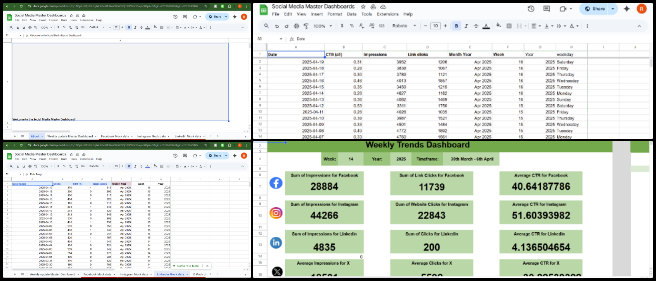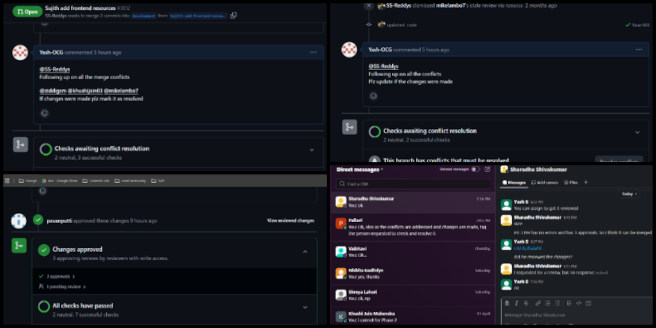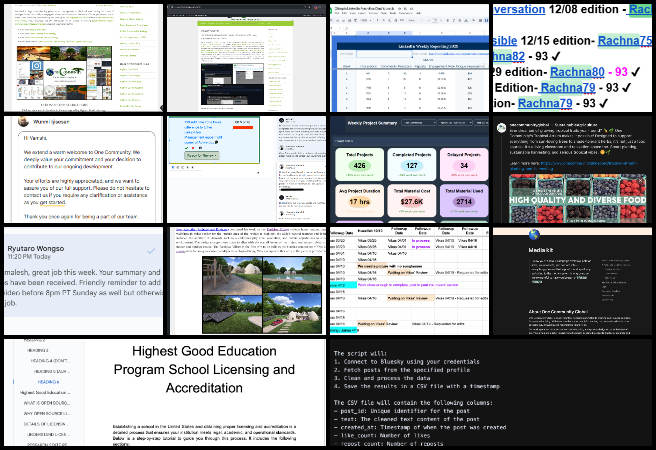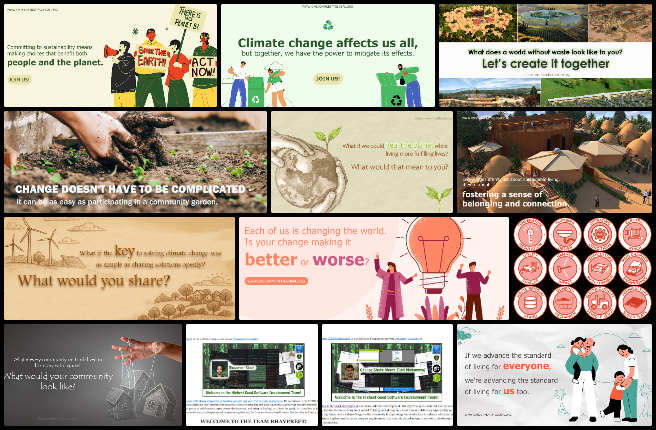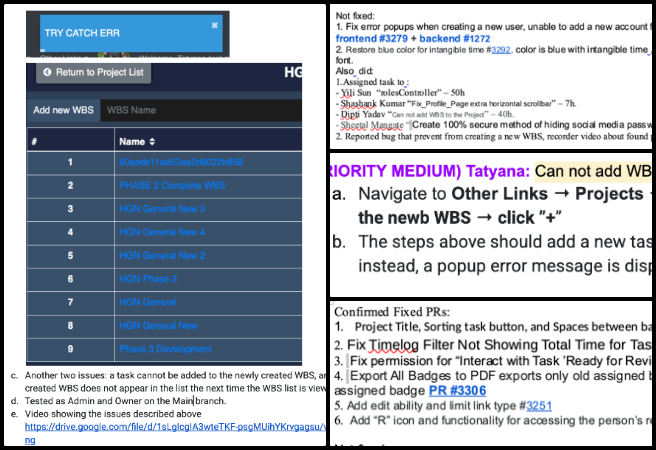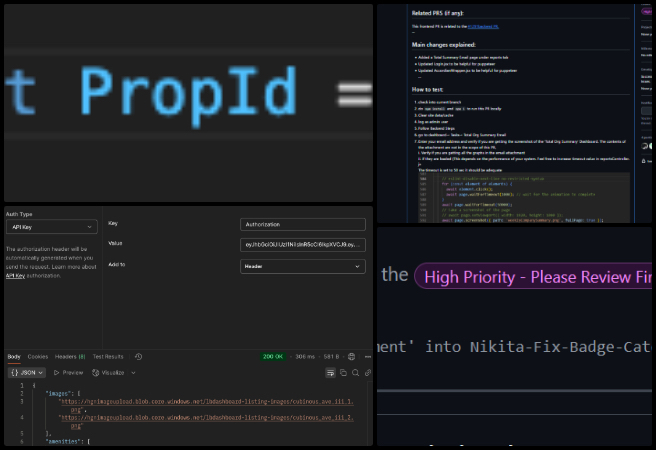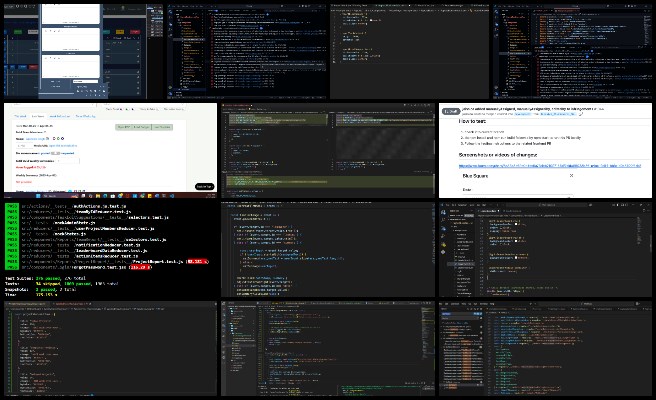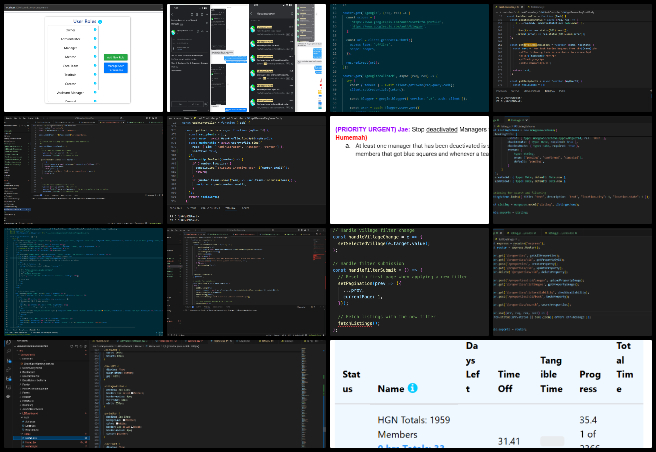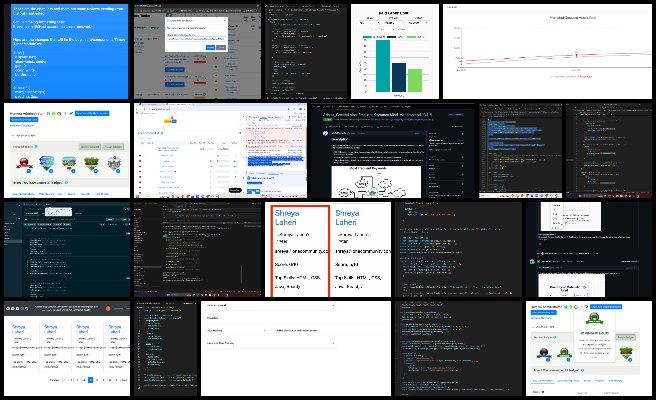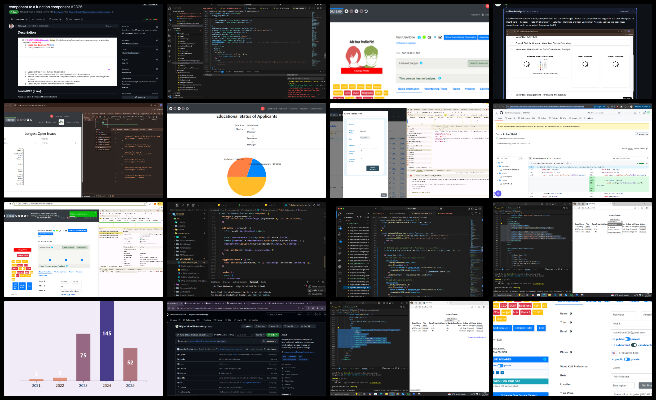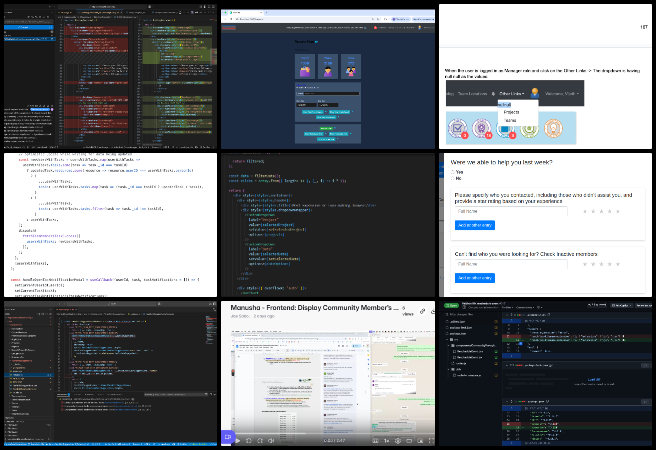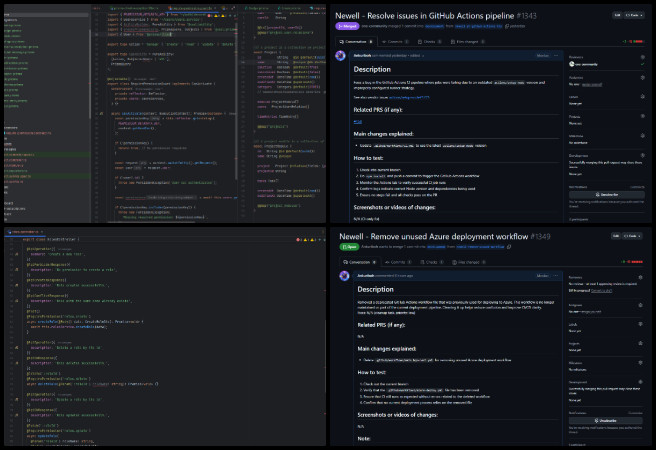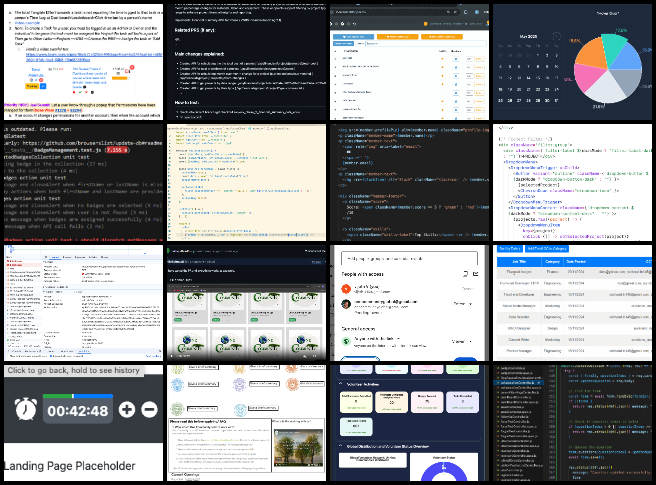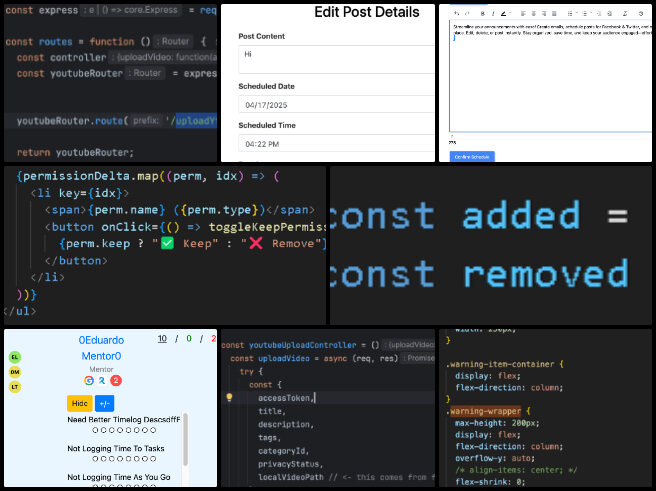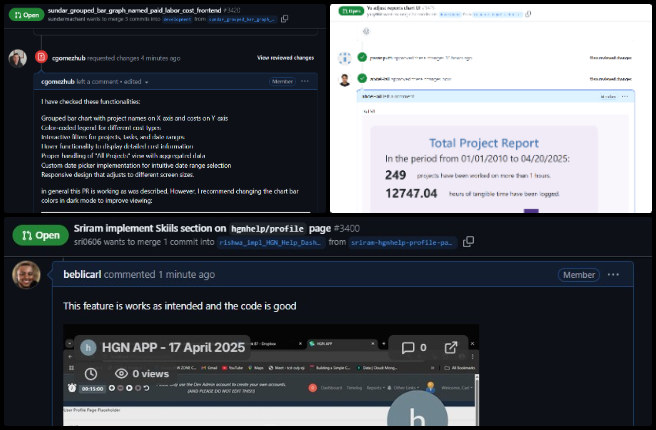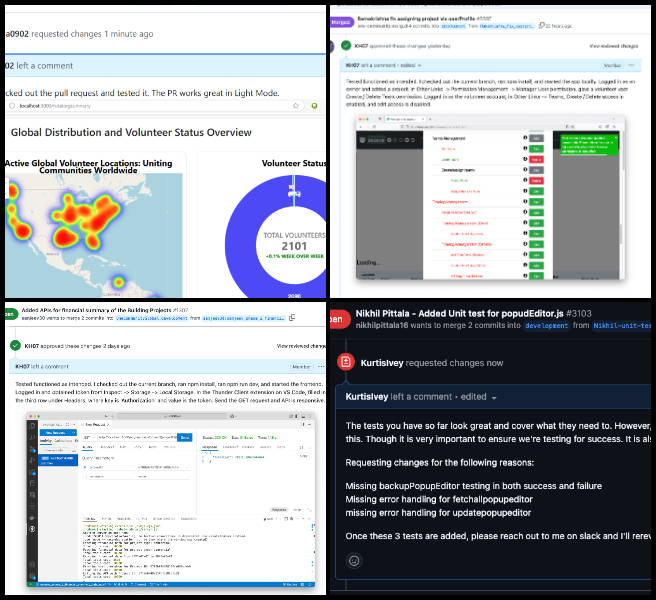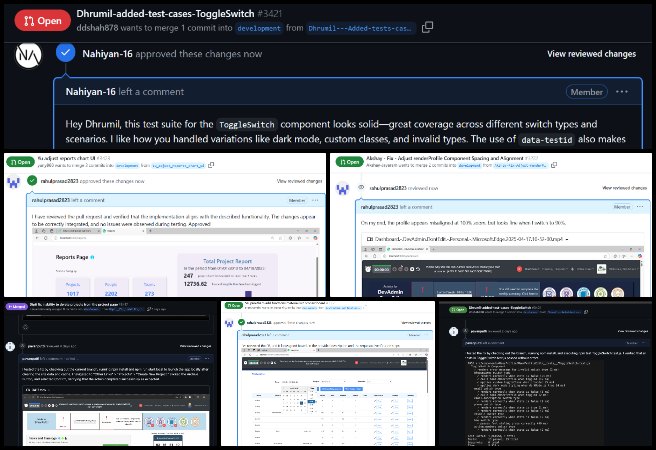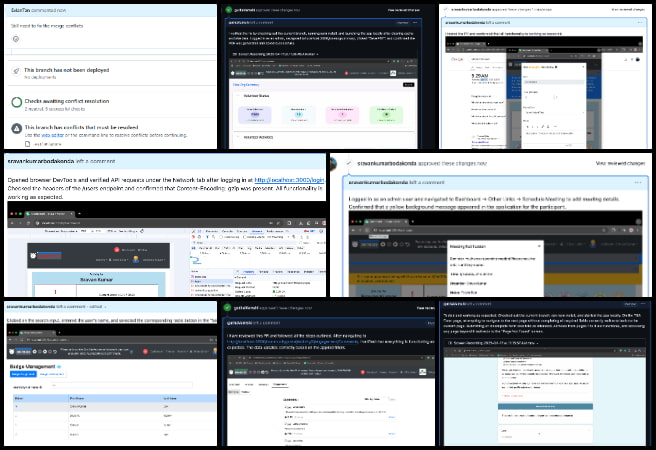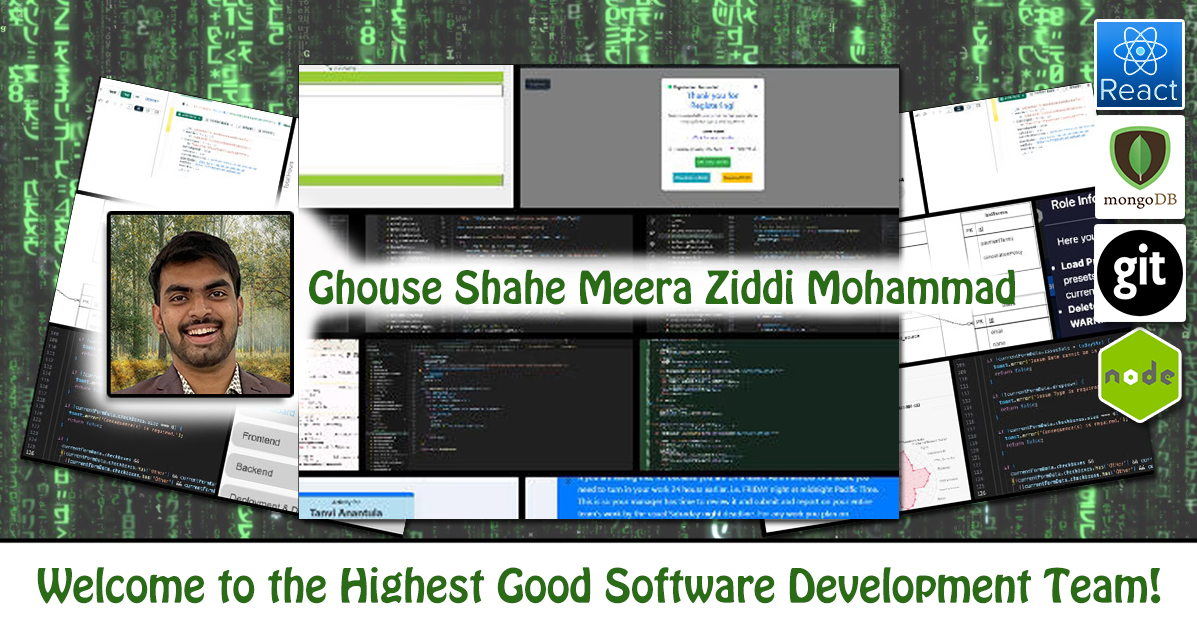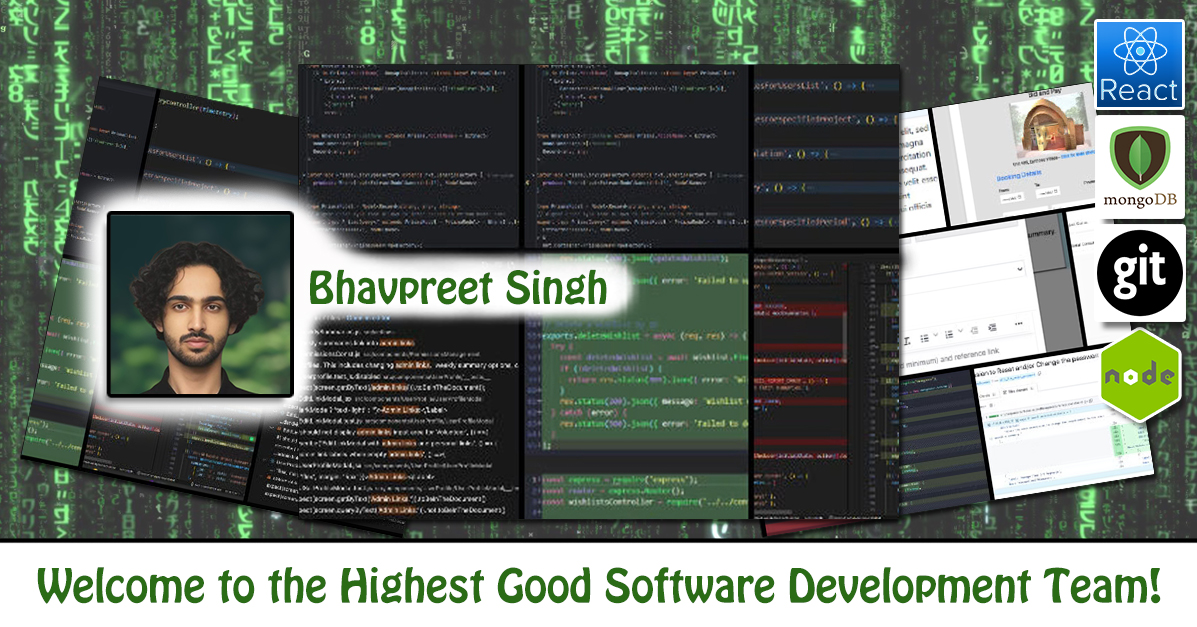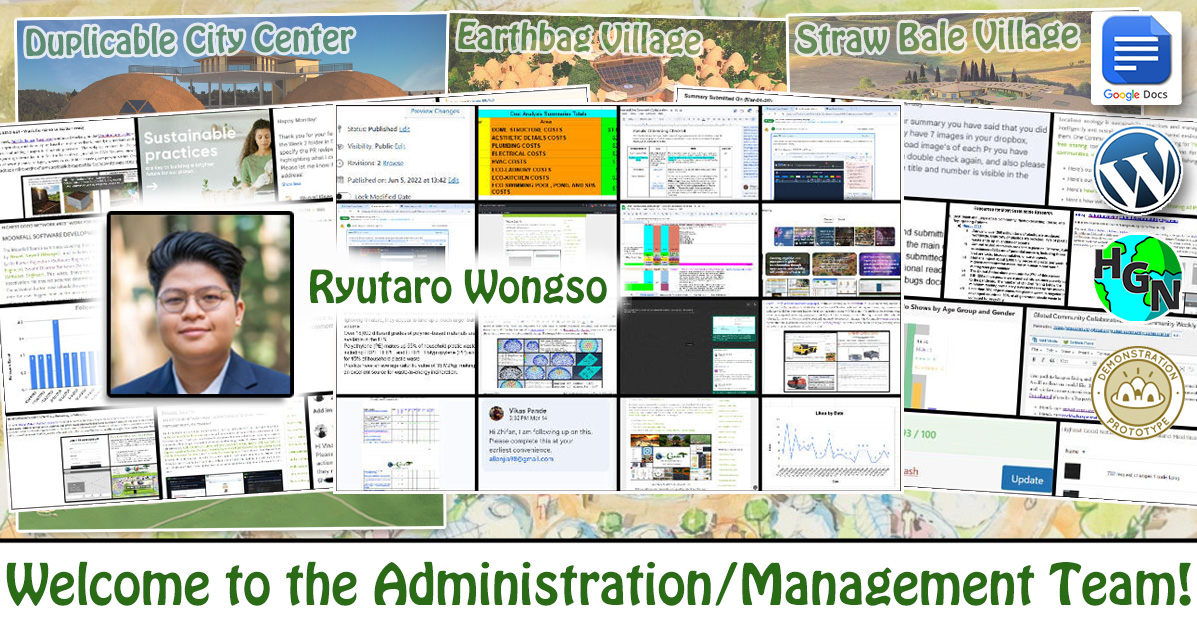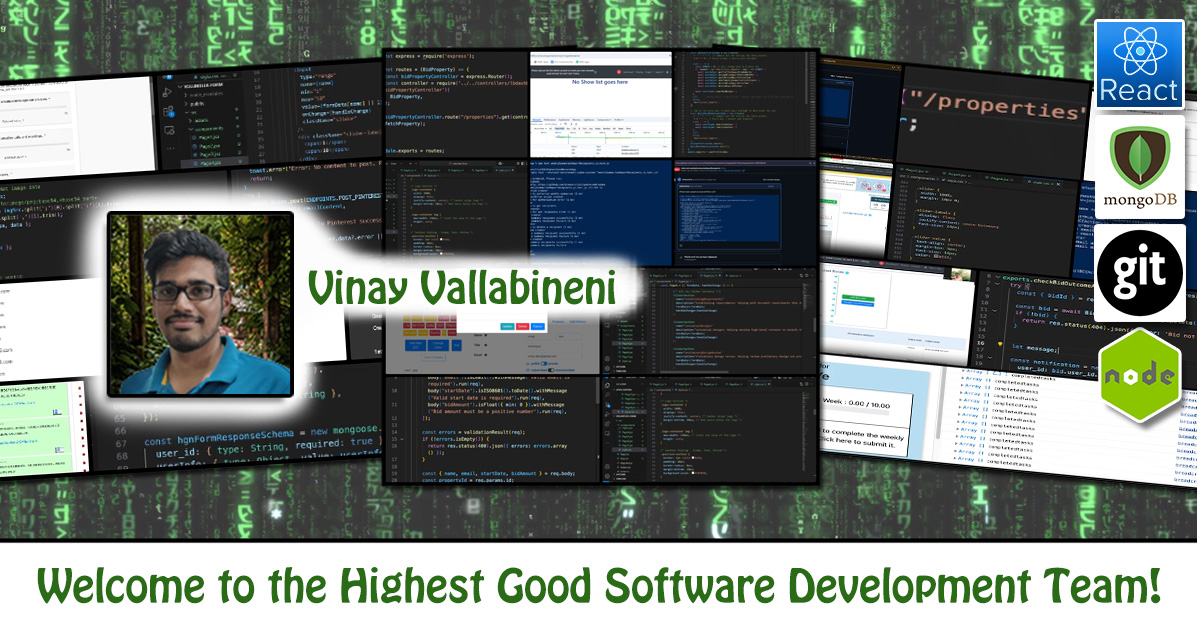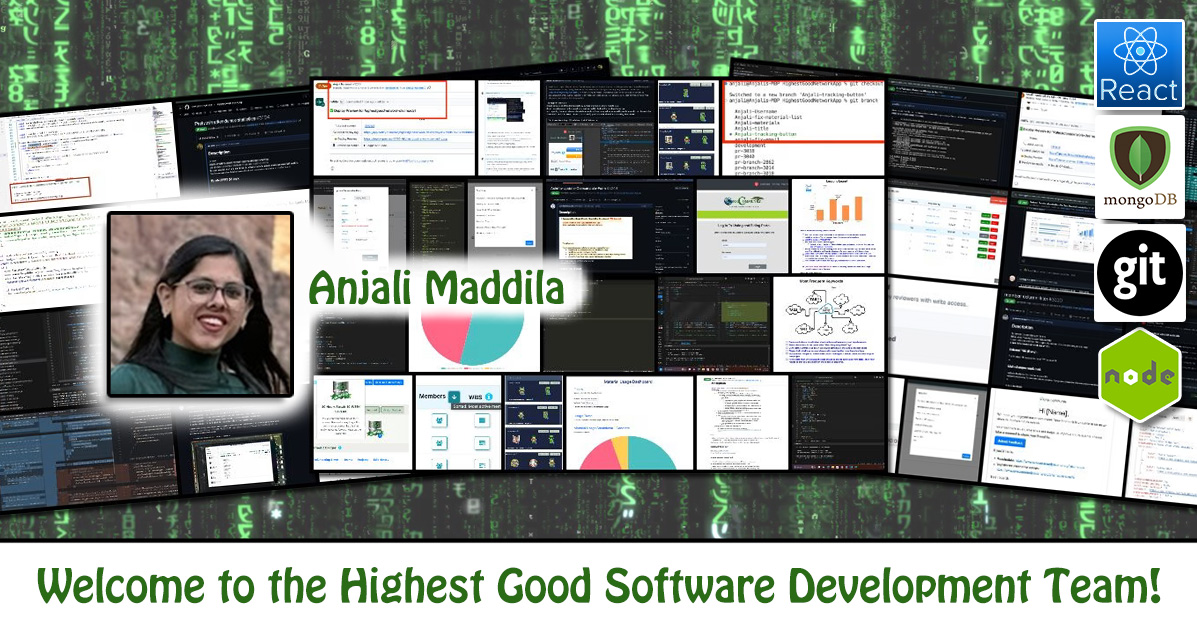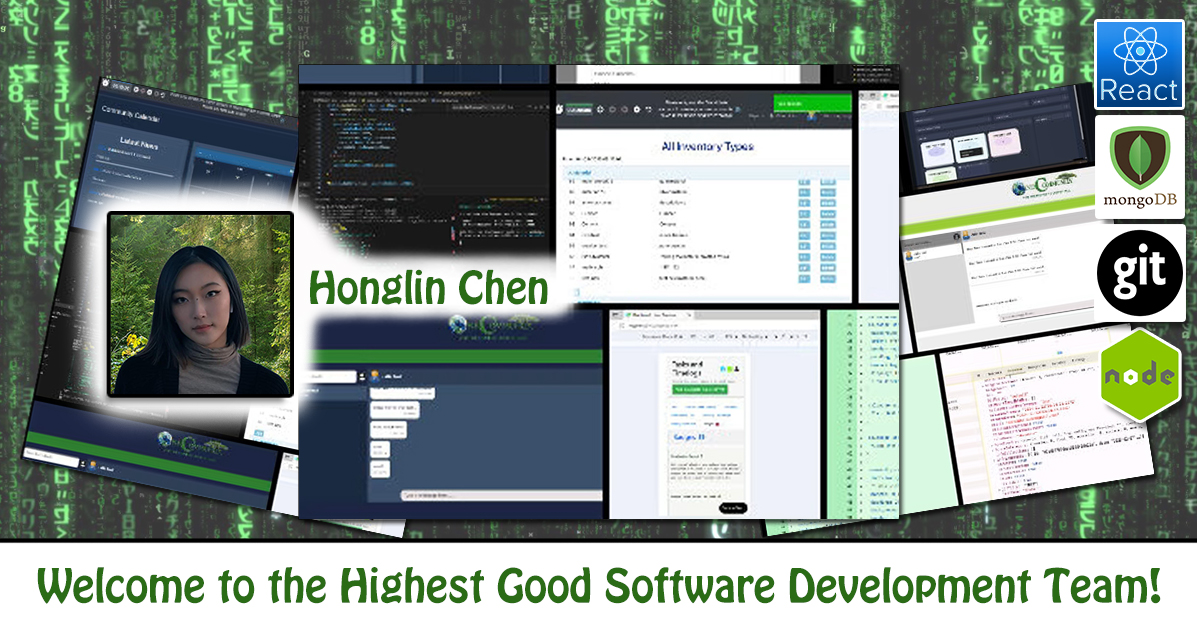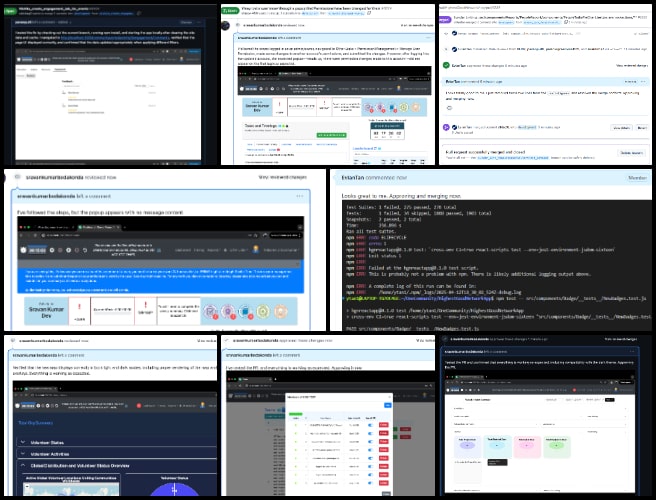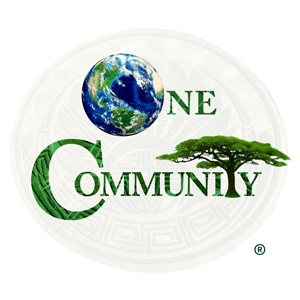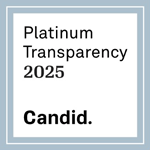At One Community, an all-volunteer organization, we are dedicated to designing an open source paradigm for ecological living. We are supporting this with open source and sustainable approaches to food, energy, housing, education, for-profit and non-profit economic design, social architecture, fulfilled living, global stewardship practices, and more. Combining these, our model is designed to be self-replicating, inspiring others to join our mission of regenerating our planet through a global collaboration of teacher/demonstration hubs, where our sustainability practices will be further evolved and open sourced.
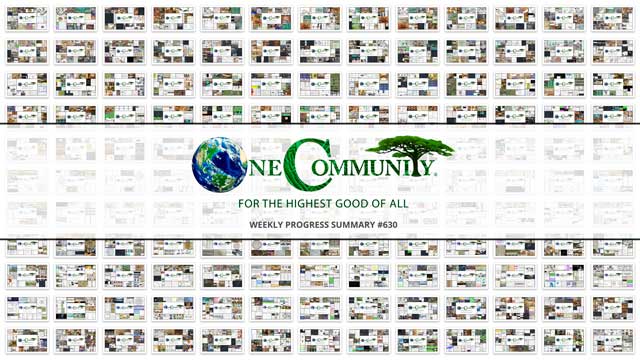
OUR MAIN OPEN SOURCE HUBS
Click on each icon to be taken to the corresponding Highest Good hub page.
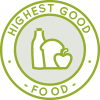
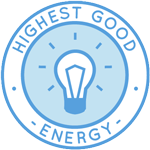
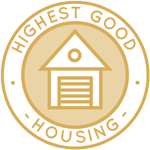
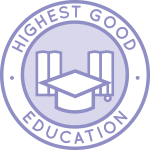
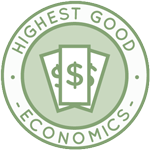
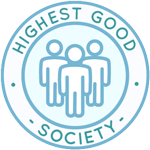
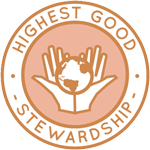
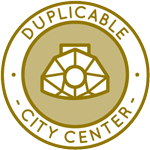
One Community’s physical location will forward this movement as the first of many self-replicating teacher/demonstration communities, villages, and cities to be built around the world. This is the April 14th, 2025 edition (#630) of our weekly progress update detailing our team’s development and accomplishments:
An Open Source Paradigm for Ecological Living
One Community Progress Update #630
DONATE | COLLABORATE | HELP WITH LARGE-SCALE FUNDING
CLICK HERE IF YOU’D LIKE TO RECEIVE AN EMAIL EACH WEEK WHEN WE RELEASE A NEW UPDATE
YOU CAN ALSO JOIN US THROUGH SOCIAL MEDIA










ONE COMMUNITY WEEKLY UPDATE DETAILS
HIGHEST GOOD HOUSING PROGRESS
 One Community is designing an open source paradigm for ecological living through Highest Good housing that is artistic and beautiful, more affordable, more space efficient, lasts longer, DIY buildable, and constructed with healthy and sustainable materials:
One Community is designing an open source paradigm for ecological living through Highest Good housing that is artistic and beautiful, more affordable, more space efficient, lasts longer, DIY buildable, and constructed with healthy and sustainable materials:
This week, Adil Zulfiquar (Engineer) continued working on the Vermiculture Toilet engineering designs. Adil updated the vermiculture temperature monitoring and control device report based on feedback received. The report content was reformatted to ensure consistency, and the detailed device information was rearranged and updated according to the assigned ranking. The comparison spreadsheet for both the monitoring and control devices was updated to incorporate the rankings and include pictorial representations for improved clarity. Additional content was added to show alignment with the overall vermiculture system. The Earthbag Village, the first of seven planned villages, serves as the initial housing component within One Community’s open source model for an open source paradigm for ecological living. See below for some of the pictures related to this work.
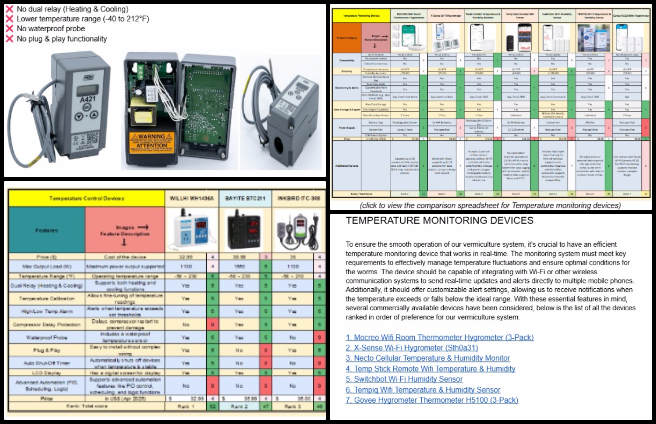
Anil Karathra (Mechanical Engineer) continued advancing the engineering and design of the Vermiculture Toilet for the Earthbag Village project. The eco toilet design report was completed, including drafting and formatting. Work continued on the vermiculture toilet seat assembly instructions, with step-by-step content and supporting images developed. Sequential assembly images were finalized, and the full set of DIY toilet seat assembly instructions was created and formatted. The weekly summary was compiled, and screenshots of the previous week’s work were uploaded to Dropbox. This commitment to an open source paradigm for ecological living drives the development of innovative, eco-friendly solutions that balance environmental responsibility with high standards of functionality. See below for pictures related to this work.
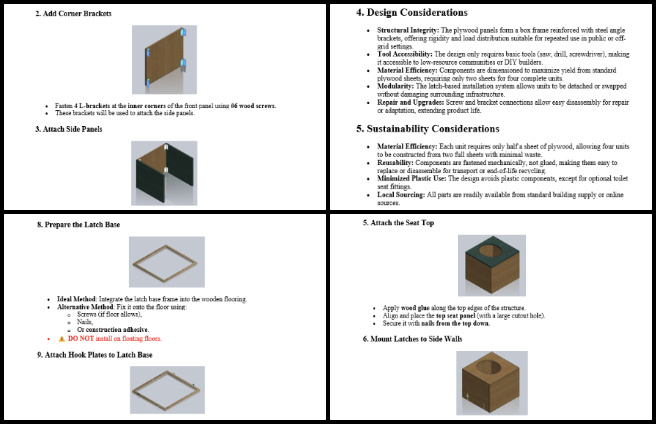
Audrey Gunawan (Mechanical Engineer) continued working on the Vermiculture Toilet plumbing details. Audrey created new configurations and adjusted the pipes on both sides of the assembly. She determined that angling the pipes would allow for the use of available wye connections that can be ordered. She modified the assembly to ensure that the mates were fixed and less prone to breaking. Based on existing plumbing plans, she decided that the pipe lengths should differ on each side and updated several pipes to reflect the varying distances between the flush toilets and the vermiculture toilets. Audrey found this configuration to be an improvement over the previous version and identified that the remaining task is to add the y configuration to complete the plumbing plan. As the first of seven planned villages, Earthbag Village provides the initial housing within One Community’s open source designs for an open source paradigm for ecological living. See below for some of the pictures related to this work.
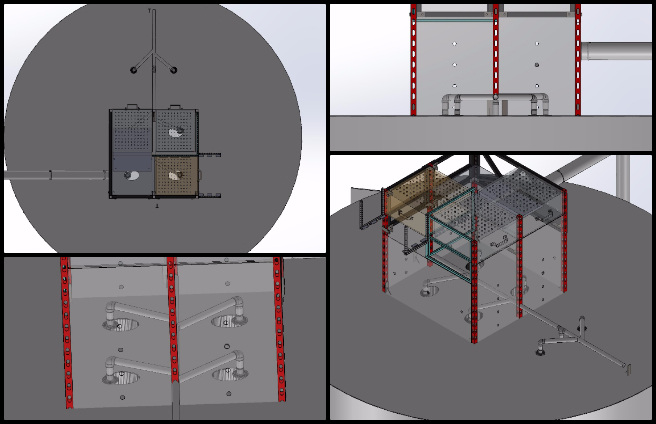
Derrell Brown (Plumbing Designer) continued working on the Earthbag Village 4-dome home plumbing details. This week, Derrell coordinated with Michaela on Monday to address follow-up items related to finalizing the mechanical, plumbing, and electrical plans. Electrical tasks included revising the panel schedule to align with the architect’s existing room-based circuit categorization, updating the luminaire schedule with correct bulb and housing model numbers introduced the previous week, and circuiting switches to match the electrical switching plan. He used material from the One Community website to select the most efficient light bulb. Once the electrical schedule was prepared for review, he moved on to mechanical and plumbing tasks, which included adjusting the condensate drain location after further discussion with the architect to consolidate the piping and reduce roof penetrations. After completing these adjustments, Derrell plotted both the mechanical/plumbing and electrical plans for the architect’s final review. One Community’s open source launching of an open source paradigm for ecological living begins with Earthbag Village, the first of seven planned villages providing housing. See below for some of the pictures related to this work.
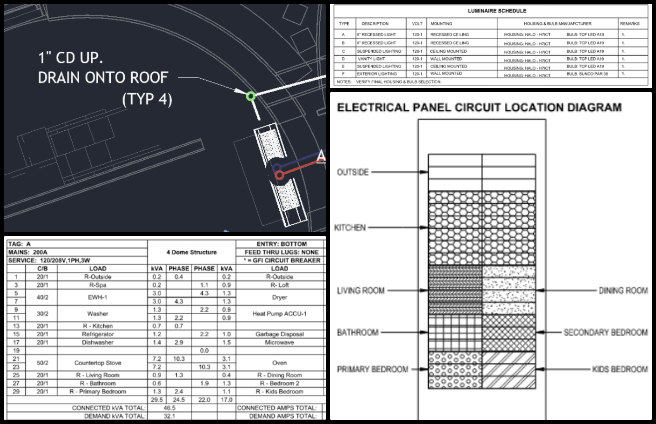
Faeq Abu Alia (Architectural Engineer) continued his work on the Earthbag Village 4-dome home renders. Faeq worked on the walkthrough video render for the outside area of the project to highlight the added natural features and landscaping. Updates included the addition of elements such as a children’s play area, vegetation, and terrain adjustments to enhance the outdoor environment. The design changes were made to align with the overall layout of the project and support visual continuity between indoor and outdoor spaces. The Earthbag Village is the first of 7 to be built as the housing component of One Community’s open source plans for an open source paradigm for ecological living. View examples of this work in the pictures provided below.
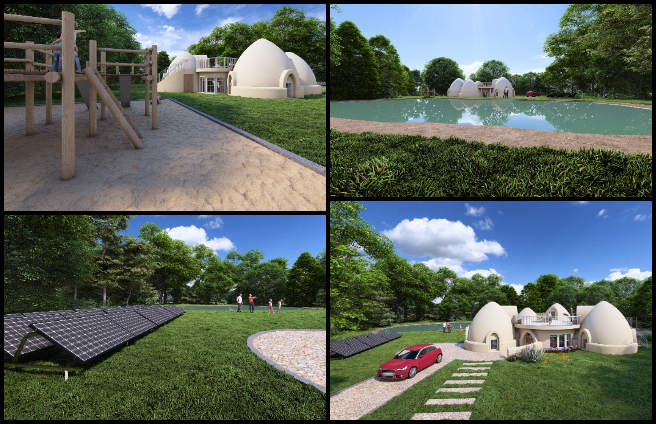
Karthik Pillai (Mechanical Engineer) continued helping finish the Vermiculture Toilet engineering and helping with the Earthbag Village 4-dome home roof plan. Karthik worked primarily on the report for the four-dome cluster roof design, gathering information and performing finite element analyses to obtain relevant data and visual outputs. He also contributed to the window beam analysis at the request of Michaela by running simulations on the structure. For the vermiculture toilet design, he performed analysis tasks to support report preparation and worked on developing the report for the waste dumping mechanism. The structural analysis for the basic design was completed, and Karthik proceeded to incorporate fasteners and other specific components to finalize the design. As the first of seven planned villages, Earthbag Village provides the initial housing within One Community’s open source designs for an open source paradigm for ecological living. See the work in the collage below.
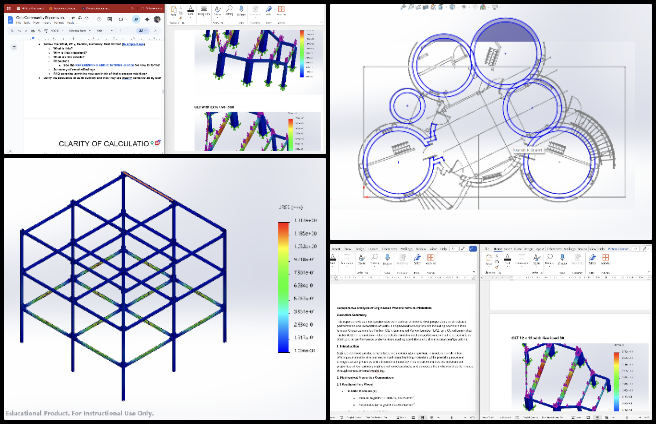
Ketsia Kayembe (Civil Engineer) started working on the Earthbag Village designs related to Rainwater Harvesting and Water Catchment. Ketsia began researching ways to improve and complete the inlet design content for the Earthbag Village stormwater management system. She met with Yi-Ju to clarify questions, review the progress of current tasks, and discuss upcoming responsibilities. She also completed an initial rough draft of the cost analysis for the rainwater harvesting system, which will be reviewed during their weekly meetings. Some aspects of the cost analysis, including quantities and sizes of certain materials, still need to be confirmed with Yi-Ju as the design is still being refined. One Community’s open source model for an open source paradigm for ecological living begins with Earthbag Village, the first of seven planned villages providing housing. See below for some of the pictures related to this work.
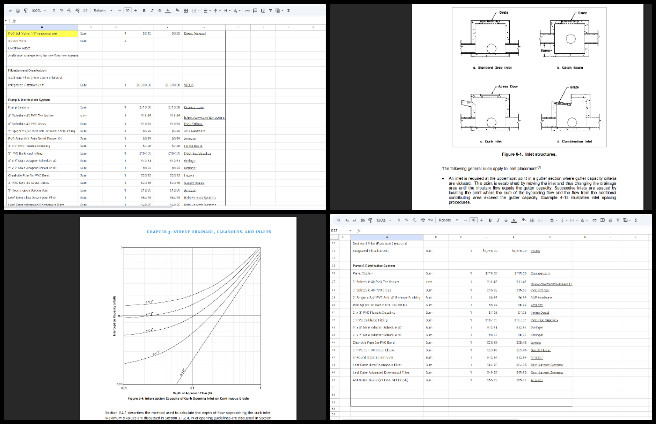
Michaela Silva (Architect) continued working on the architectural details for the Earthbag Village 4-dome home design. Michaela reviewed and commented on the updated render video. She posed design coordination questions and implemented the changes in the Revit model. She added doors to the built-in bookcases and removed the framing around the refrigerator in the kitchen. Michaela also created the front door plan detail and section detail to update the floor sheet. As the first of seven villages in One Community’s open source plan for an open source paradigm for ecological living, the Earthbag Village represents the housing element. See her work in the collage below.
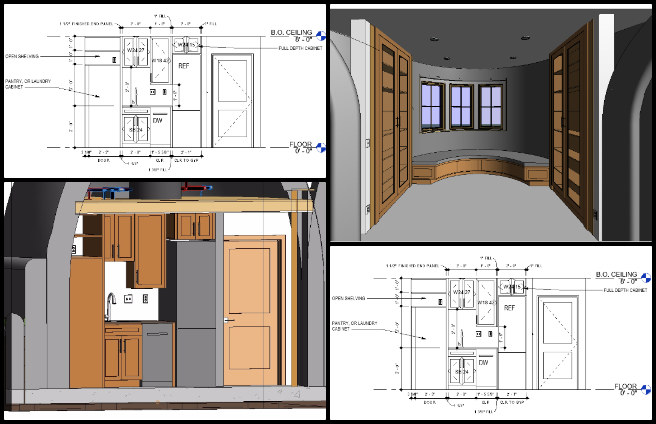
Rumi Shah (Civil Engineer) continued working on the Earthbag Village upgrades to bring our designs closer to construction-ready plans. Rumi focused on updating and detailing the drawing set for the 6-dome structure. Key tasks included refining the floor plans for accuracy, adding detailed dimensions and sectional views, and ensuring that all elements align with current construction standards. The completed set was compiled into a PDF and attached for review. One Community’s open source resources for an open source paradigm for ecological living begin with the Earthbag Village, the first of seven planned villages providing housing. See below for some of the pictures related to this work.
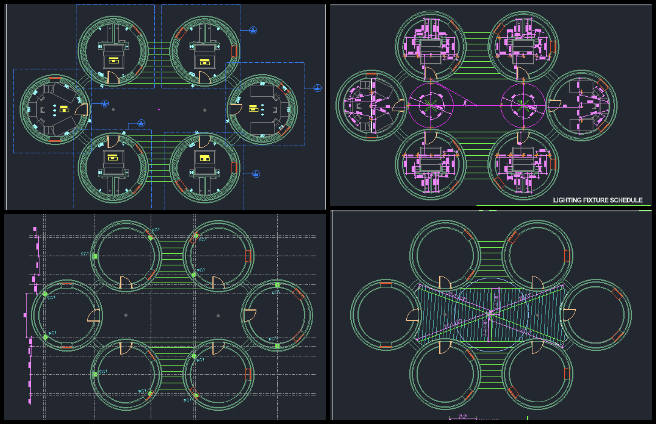
Yi-Ju Lien (Environmental Engineer) continued her work on the Earthbag Village LEED points related to stormwater retention. Yi-Ju worked on researching and writing content about inlet sizing for different types of inlets. She reevaluated the original material on this topic to check for accuracy and reliability and supplemented the content with additional details to improve the explanation. She also reviewed feedback-related content. For the Earthbag Village design, due to the ongoing issue with asymmetry, Yi-Ju reevaluated the entire CAD file and identified and summarized where the discrepancies occurred. The summary of these issues is intended to help others understand where the inconsistencies lie in the design, making it easier to correct errors and maintain consistency in future updates, highlighting the importance of maintaining collaboration and unity in an open source paradigm for ecological living. See some of the work done in the collage below.
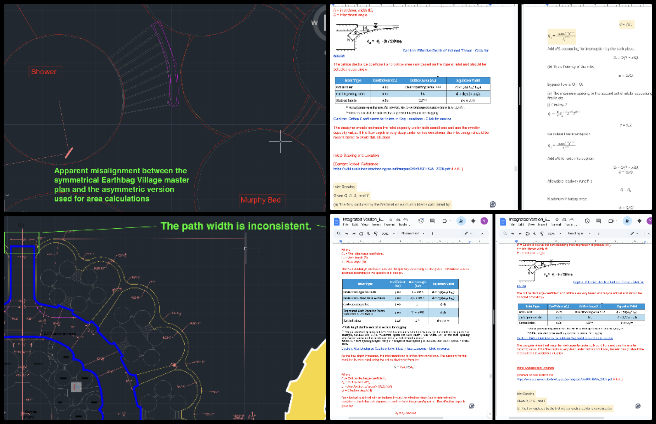
DUPLICABLE CITY CENTER PROGRESS
 One Community is designing an open source paradigm for ecological living through a Duplicable and Sustainable City Center that is LEED Platinum certified/Sustainable, can feed 200 people at a time, provide laundry for over 300 people, is beautiful, spacious, and saves resources, money, and space:
One Community is designing an open source paradigm for ecological living through a Duplicable and Sustainable City Center that is LEED Platinum certified/Sustainable, can feed 200 people at a time, provide laundry for over 300 people, is beautiful, spacious, and saves resources, money, and space:
This week, Jason Bao (Architectural Designer) continued working on producing renders for the Duplicable City Center library. The communication with Jae focused on feedback and clarifying next-step directives. Panoramic images were sourced to integrate as background elements, while plant additions and texture modifications continued in the scene. The original model was divided into smaller components to optimize Lumion performance, and landscaping adjustments were made per Jae’s specifications, including the inclusion of diverse tree and flora varieties. All 2D placeholder background models were removed and replaced with updated panoramic imagery. Layer organization was refined, additional vegetation was incorporated, and test renders were executed to evaluate progress and visual outcomes. The Duplicable City Center is a foundational part of One Community’s open-source model, representing an open source paradigm for ecological living. See some of this work in the pictures below.
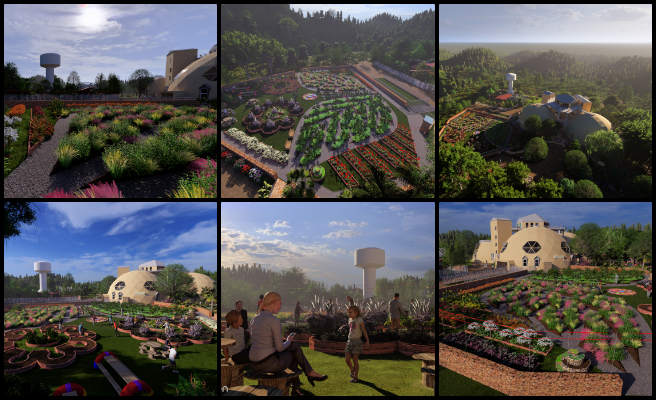
Manjiri Patil (Mechanical Design Engineer) continued working on the designs for the Duplicable City Center DIY-replicable hub connector. She is currently working on the CAD design for the hub connectors of the City Center Hub. In parallel, Manjiri is also implementing the feedback provided by Jae on the manufacturing process documentation related to these connectors. The CAD model is being refined to improve accuracy and completeness, while the process document is being updated for clarity and compliance. The Duplicable City Center is a cornerstone of One Community’s open-source model, showcasing an open source paradigm for ecological living. Take a look at the related work below.
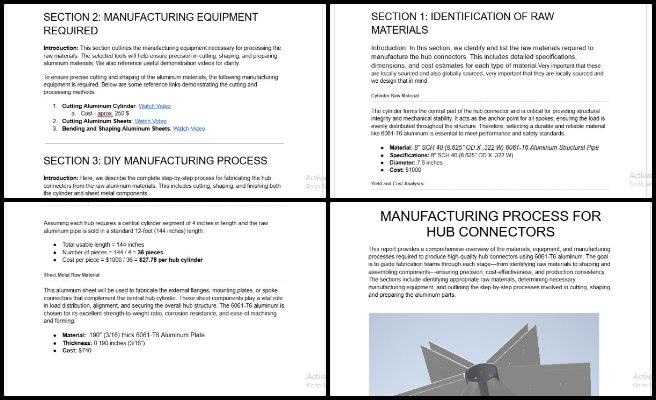
Sanket Basannavar (Mechanical Engineer) continued working on the Duplicable City Center spa cover as part of the City Center Natural Pool and Eco-spa Designs. The design of the spa cover was completed based on materials available in the market to keep the cost low. The full assembly of the spa cover was then finished. A static structural analysis was performed, which showed that the initial structure was not strong enough to withstand a 200-pound load. The design was then modified to include aluminum beams for additional support. Another static structural analysis was carried out, but several meshing errors occurred during the process. After resolving the meshing issues, the analysis still showed that the updated design was not sufficient to support the required load. As part of One Community’s open-source initiative, the Duplicable City Center embodies an open source paradigm for ecological living. See some of this work in the pictures below.
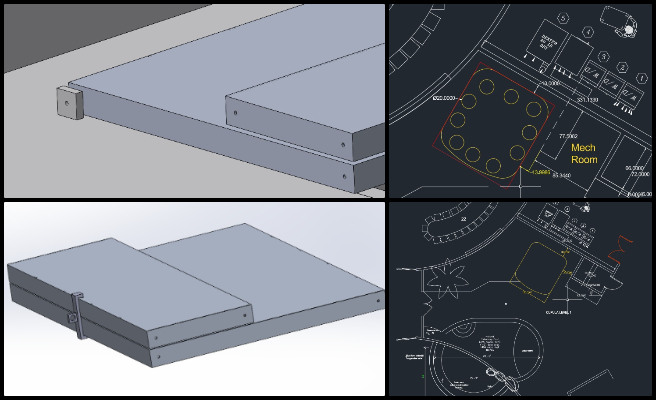
Shu-Tsun (Engineer) continued working on the Duplicable City Center by dedicating her time to conducting the structural and frame analysis of the City Center dome using Autodesk Inventor, as well as working on the spreadsheet for which she is responsible. She revisited her previous analysis and identified multiple mistakes that had affected the reliability of her results. To correct this, she decided to redo the entire analysis from the beginning to ensure it was done correctly. Shu-Tsun also took the time to thoroughly review the instruction manual and supporting materials to strengthen her grasp of the proper methods. Her aim was to avoid repeating these errors and to improve the overall standard of her work. The Duplicable City Center is a cornerstone of One Community’s open-source model, showcasing an open source paradigm for ecological living. Take a look at the related work below.
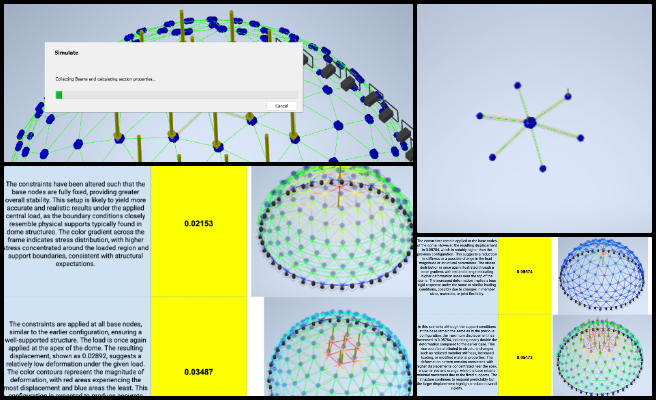
HIGHEST GOOD FOOD PROGRESS
 One Community is designing an open source paradigm for ecological living through Highest Good food that is more diverse, more nutritious, locally grown and sustainable, and part of our open source botanical garden model to support and share bio-diversity:
One Community is designing an open source paradigm for ecological living through Highest Good food that is more diverse, more nutritious, locally grown and sustainable, and part of our open source botanical garden model to support and share bio-diversity:
This week, the core team completed adding photos to the Master Tools, Equipment, and Materials/Supplies document, including items related to the Goat, Chicken, and Rabbit sections. They also added items to the Orchard List for Tools, Equipment, and Materials/Supplies. New additions identified included STA-BIL Fuel Stabilizer, 2-cycle oil mix, and 40-weight bar oil for chain lubrication. Throughout the Master Tools list, all instances of “O” designations were changed to “ORCH” to enhance the identification of orchard-related entries. Additionally, they reviewed the 4-dome cluster video and provided feedback. The Highest Good Food initiative is a key component of One Community’s open source plans, focused on an open source paradigm for ecological living, and exemplifies the organization’s commitment through innovative design and implementation. Below are some of the images showcasing this work.
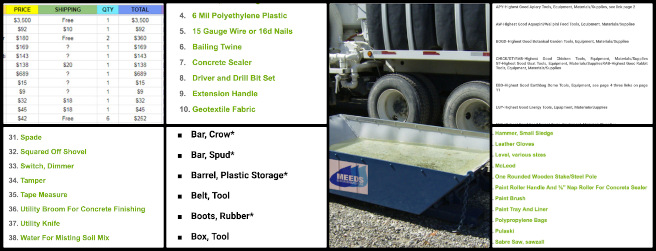
Dirgh Patel (Volunteer Mechanical Engineer) continued assisting with the Climate Battery design evolutions. He completed the stress and strain analysis on a pipe model, including the calculation of applied pressure and the method used to determine it at a depth of 2.5 feet, and documented the results in a Word file. He began working on the thermal simulation of a pipe model and identified key parameters such as temperature and convection coefficient. Dirgh completed the stress-strain simulation for a double pipe model that required a fine mesh and accurate selection of end boundaries. He also initiated the thermal simulation for the battery system integrated with the greenhouse, defining temperature conditions and thermal convection, but the meshing and simulation processes are still in progress due to the pipe curvature and overall model complexity. The Highest Good Food initiative is a key component of One Community’s open source plans, focused on an open source paradigm for ecological living, and exemplifies the organization’s commitment through innovative design and implementation. Below are some of the images showcasing his work.
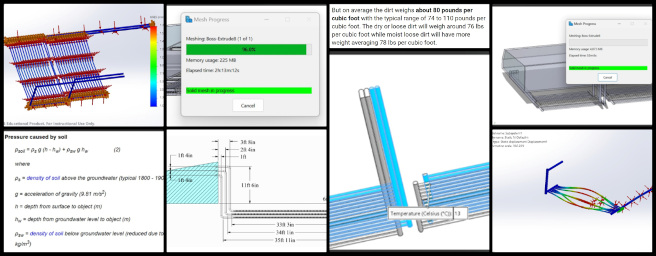
Jay Nair (BIM Designer) continued working on Aquapini and Walipini Planting and Harvesting lighting and HVAC design. He calculated the total lighting energy use for Walipini 1 with an earthen roof. He examined a team member’s document outlining lighting calculations to verify alignment with project parameters. Additionally, Jay continued researching variations in energy calculation methods between structures with Solawrap roofs and those with earthen roofs to clarify methodological distinctions. This work aimed to ensure consistency in energy assessments across different building designs. The Highest Good Food initiative is a key component of One Community’s open source plans, focused on an open source paradigm for ecological living, and exemplifies the organization’s commitment through innovative design and implementation. Below are some of the images showcasing this work.
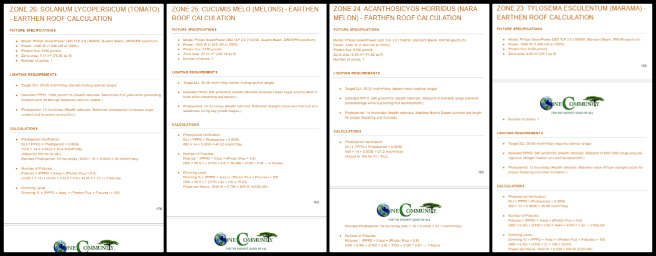
Keerthi Reddy Gavinolla (Software Developer) continued working on the Highest Good Food page additions covering small-business and urban community options. She reviewed the Expressers team’s work, created their team collage, and commented on their documents. She updated Blog #629. In addition, she continued contributing to the Highest Good Food Infrastructure website by updating the format as required, adding images, and fixing links to maintain consistency and align with the requirements. Keerthi also reviewed the bugs and functionality document and tested some PRs on the dev site. The Highest Good Food initiative is essential to One Community’s open source plans, focused on an open source paradigm for ecological living, and exemplifies the organization’s commitment through innovative design and implementation. Her contributions are highlighted in the collage below.
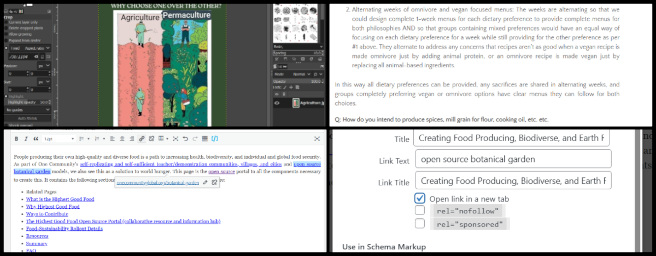
Mary Nelson (Landscape Planner) continued research and development of various Highest Good Food components. This week’s focus was research for an open source paradigm for ecological living by focusing primarily on editing the soil amendments strategy and making several updates to the document’s format to align with One Community standards. She created a chart graph using a One Community template. This chart listed plants commonly grown in a meadow, including the wildlife attributes of each species (larval host, pollinators, seasons of interest). Mary then developed seed mixtures tailored to different environmental conditions, such as deer resistance, shade tolerance, and coastal adaptability. The Highest Good Food initiative is essential to One Community’s open source plans, focused on an open source paradigm for ecological living, and exemplifies the organization’s commitment through innovative design and implementation. Her contributions are highlighted in the collage below.
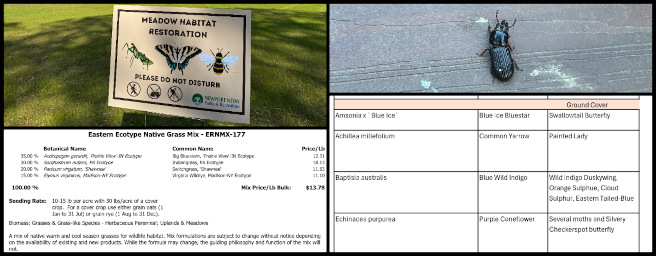
Pallavi Deshmukh (Software Engineer) continued reviewing team members’ work and incorporated their contributions to ensure completeness. She also assisted with the research for an open source paradigm for ecological living by completing three interviews and providing details accordingly. She integrated Chris’s GIS content into the permaculture page using the web design tutorial, according to Jae’s suggestion for improvement, and submitted it for review again. Pallavi created Blog 629, made the necessary corrections, and submitted the finalized PDF to the Fixed folder. The Highest Good Food initiative is a key component of One Community’s open source plans, focused on an open source paradigm for ecological living, and exemplifies the organization’s commitment through innovative design and implementation. Her contributions are highlighted in the collage below.
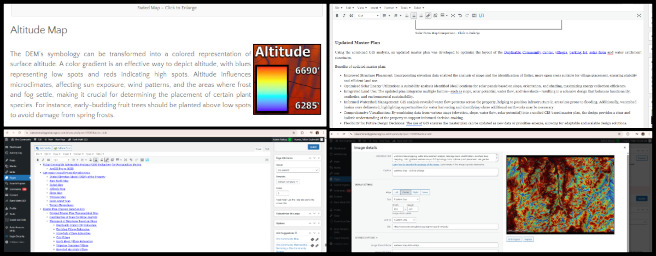
Tanmay Koparde (Industrial Engineer and Team Administrator) continued optimizing the Food Procurement and Storage Plan to enhance efficiency and sustainability. He continued leveraging the Just-In-Time (JIT) methodology to enhance food storage efficiency and mitigate supply chain disruptions using the NetSuite ERP software. He explored strategies to address inventory shortages and ensure smooth food distribution. Tanmay also studied buffer and anticipation inventory, focusing on their implementation in food storage to reduce waste, prevent spoilage of fresh foods, and maintain emergency reserves. The Highest Good Food Initiative is a key component of One Community’s open source plans, focused on an open source paradigm for ecological living, and exemplifies the organization’s commitment through innovative design and implementation. See his work in the collage below.
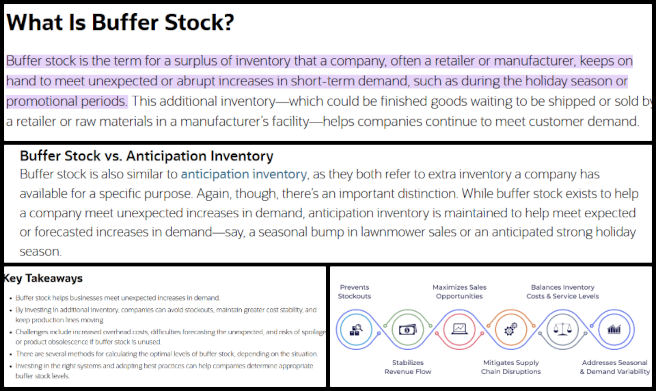
HIGHEST GOOD ENERGY PROGRESS
 One Community is designing an open source paradigm for ecological living through Highest Good energy that is more sustainable, resilient, supports self-sufficiency and includes solar, wind, hydro and more:
One Community is designing an open source paradigm for ecological living through Highest Good energy that is more sustainable, resilient, supports self-sufficiency and includes solar, wind, hydro and more:
- Learn about the open source sustainable-energy foundations: Solar, Hydro, and Wind
- Explore our research into the most sustainable products and companies for saving water and energy: Insulation, Eco-laundry, Lightbulbs and Light Bulb Companies, Doors and Door Companies, Windows and Window Companies, Toilets, Faucets and Faucet Accessories, Urinals, and more.
This week, Dishita Jain (Data Analyst) continued assisting with the Highest Good Energy research and cost analysis for an open source paradigm for ecological living. Time was spent continuing research on various aspects of solar panel cost analysis and integrating findings into the existing spreadsheet. Additional hours were used to address feedback from Jae and to confirm that the Highest Good Energy icon list and search engine include every relevant page, with results documented and shared. Earlier in the week, the research for solar panel cost analysis was resumed, and integration efforts continued to align data accurately. Separately, Dishita’s work under OC Administration involved creating a collage, adding a team summary to WordPress, and providing feedback to other administrators. The Highest Good Energy initiative is a key component of One Community’s open source plans, focused on an open source paradigm for ecological living, and exemplifies the organization’s commitment through innovative design and implementation. Below are some of the images showcasing this work.
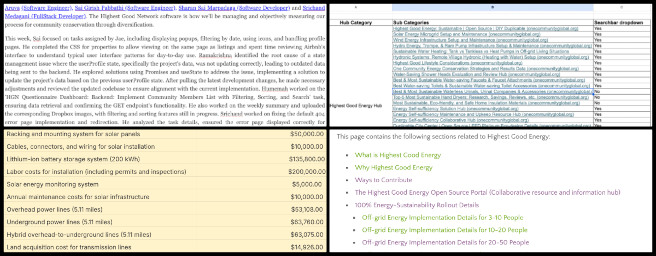
Muhammad Sarmad Tariq (Electrical Engineer) continued assisting with off-grid and grid-tied Solar Microgrid comparisons as part of the Highest Good Energy component. This is part of research for an open source paradigm for ecological living covering sustainable power supply. This week’s focus was on completing the section related to the on-grid system. In response to feedback from Jae on the document of the Off-Grid vs On-Grid PV system report, he reviewed literature on standard practices for sizing PV systems according to electrical engineering guidelines. The Highest Good Energy initiative is a key component of One Community’s open-source plans, focused on an open source paradigm for ecological living, and exemplifies the organization’s commitment through innovative design and implementation. See his work in the collage below.
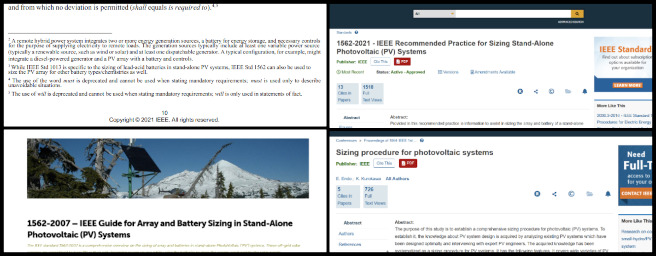
HIGHEST GOOD EDUCATION PROGRESS
 One Community is designing an open source paradigm for ecological living through Highest Good education that is for all ages, applicable in any environment, adaptable to individual needs, far exceeds traditional education standards, and more fun for both the teachers and the students. This component of One Community is about 95% complete with only the Open Source School Licensing and Ultimate Classroom construction and assembly details remaining to be finished. We’ll report on the final two elements to be finished as we develop them. With over 8 years of work invested in the process, the sections below are all complete until we move onto the property and continue the development and open sourcing process with teachers and students – a development process that is built directly into the structure of the education program and everything else we’re creating too:
One Community is designing an open source paradigm for ecological living through Highest Good education that is for all ages, applicable in any environment, adaptable to individual needs, far exceeds traditional education standards, and more fun for both the teachers and the students. This component of One Community is about 95% complete with only the Open Source School Licensing and Ultimate Classroom construction and assembly details remaining to be finished. We’ll report on the final two elements to be finished as we develop them. With over 8 years of work invested in the process, the sections below are all complete until we move onto the property and continue the development and open sourcing process with teachers and students – a development process that is built directly into the structure of the education program and everything else we’re creating too:
This week, Chitra Siddharthan (Data Analyst and Team Administrator) continued focusing on the team summary, Dropbox files, and blog for Code Crafters for Week 629, and reviewed work submitted by Dishita and Keethi. She checked the status of pull requests, updated them where necessary, and communicated any issues that required resolution. She continued developing the wireframe for the Teacher Dashboard for Phase 4, focusing on the post-login interface. This included a top header with a logo on the top-left, a page title labeled “Teacher Dashboard,” and a profile icon or dropdown on the top-right with options for viewing the profile, accessing settings, and logging out. The left panel sidebar navigation includes sections for My Classes, Assignments, Student Progress, Attendance, Messages, Curriculum Resources, and Settings. Chitra also worked on Slack communications, updated estimated task time for Ashrita, and informed Jae that the BM Dashboard login page was not responding. The One Community model of an open source paradigm for ecological living with sustainably built classrooms like this is an excellent example of sustainable change for the whole planet. See the collage below for her work.
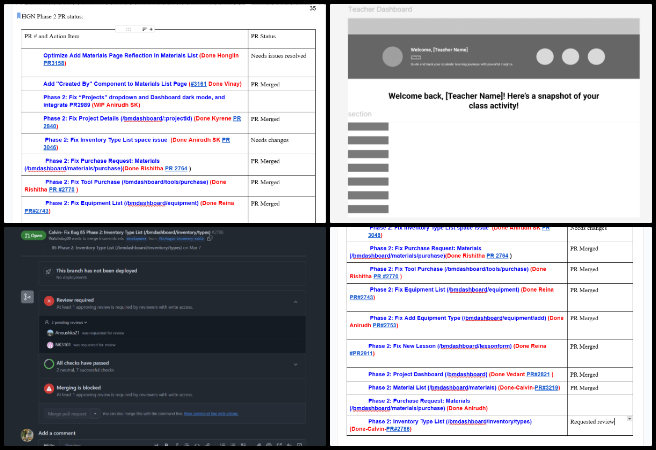
Harshitha Rayapati (Program Manager) continued work on detailing deliverables for the Highest Good education software platform, outlining various components, developing Figma designs, and expanding the visual layout of the student dashboard. This week, her work focused on progressing through the design tasks related to the student dashboard in Phase 4. Initial Figma designs were created for the left navigation bar, and further iterations were made to the overall dashboard layout and panel. The navigation panel within the dashboard design was also refined with additional details. Efforts continued on detailing the student listing logic for sprint 1, deliverable 1 with attention given to the structure and objectives. Additionally, Harshitha assisted in compiling the weekly blog update, reviewed the Graphic Design Team’s weekly progress, edited the blog page and created a collage. The One Community model of an open source paradigm for ecological living with sustainably built classrooms like this is an excellent example of sustainable change for the whole planet. See the collage below for her work.
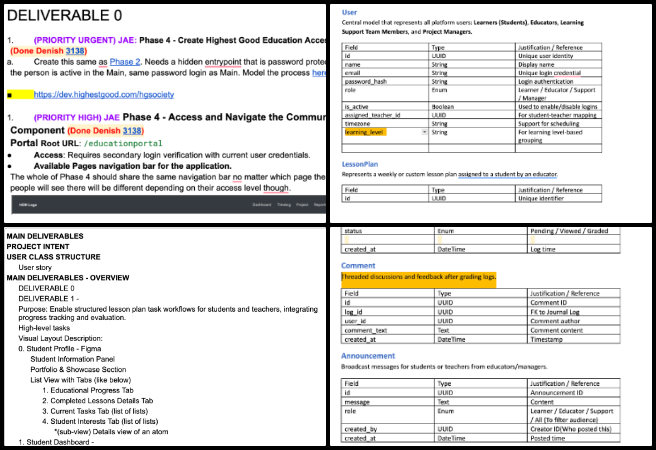
Mrinalini Raghavendran (Software Engineer) continued refining and documenting both frontend and backend requirements for various graphs. She worked on adding more functionality to the code and set up routing for the payment controller while continuing to refactor parts of the codebase. She organized all REST methods into a routing file and added new routing logic to a component she was working on. She continued refining that component, made local changes to an existing pull request, and is yet to push those updates to the repository. Mrinalini’s also watched Jae’s walkthrough video of past work and updated the documentation accordingly. And she made some additional changes requested on a previous pull request and spent more time cleaning up and refactoring the code. By forwarding an open source paradigm for ecological living with classrooms like this, One Community provides a replicable example for global sustainable development. See the collage below for her work.
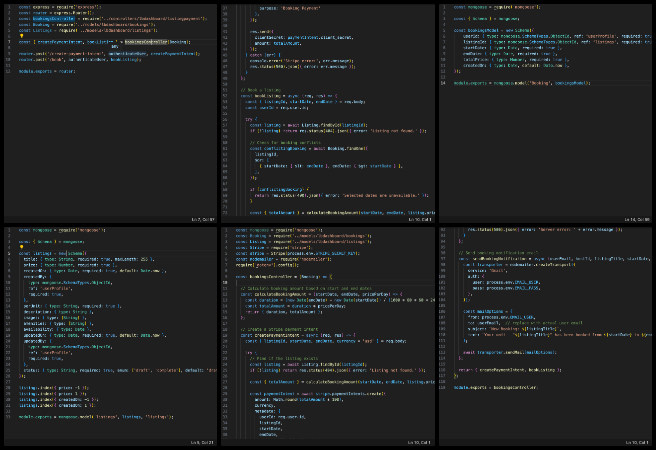
HIGHEST GOOD SOCIETY PROGRESS
 One Community is designing an open source paradigm for ecological living through a Highest Good society approach to living that is founded on fulfilled living, the study of meeting human needs, Community, and making a difference in the world:
One Community is designing an open source paradigm for ecological living through a Highest Good society approach to living that is founded on fulfilled living, the study of meeting human needs, Community, and making a difference in the world:
This week, the core team completed over 52 hours managing One Community’s volunteer-work review not included above, emails, social media accounts, web development, new bug identification and bug-fix integration for the Highest Good Network software, and interviewing and getting set up new volunteer team members. They also shot and incorporated the video above that talks about how an open source paradigm for ecological living are a foundation of the bigger picture of everything One Community is doing. The image below shows some of this work.
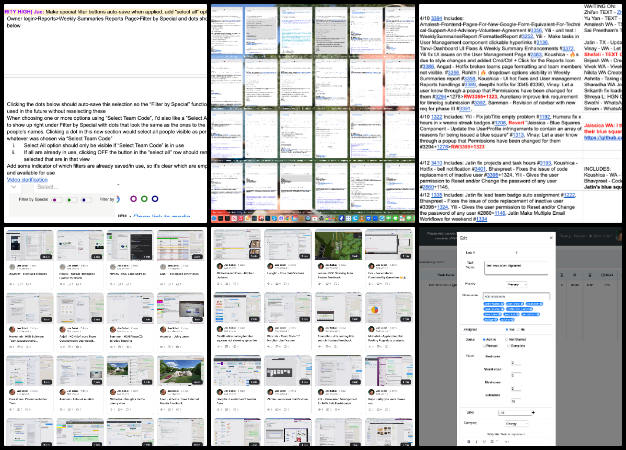
Anoushka Hazari (Data Analyst) continued working on code to automate and simplify the Highest Good Network software promotion process. She completed updates to the PR Review Dashboard role assignment document, focusing on aligning backend, frontend, and testing responsibilities with project requirements to support clearer task distribution and team workflow. She researched appropriate role assignments across development and testing areas and forwarded the updated document for review and feedback. She also reviewed her team’s pull requests and made corresponding updates to the PR review table to reflect recent activity, including the addition of new team members. Anoushka edited a blog post for accuracy, created a collage to support the content, and corrected an error in a previous blog. Additionally, she updated the HGN spreadsheet with relevant changes and reviewed content listed in sheet 4, including a peer’s blog post. This work helps One Community’s mission of an open source paradigm for ecological living. The following images show her work for the week.
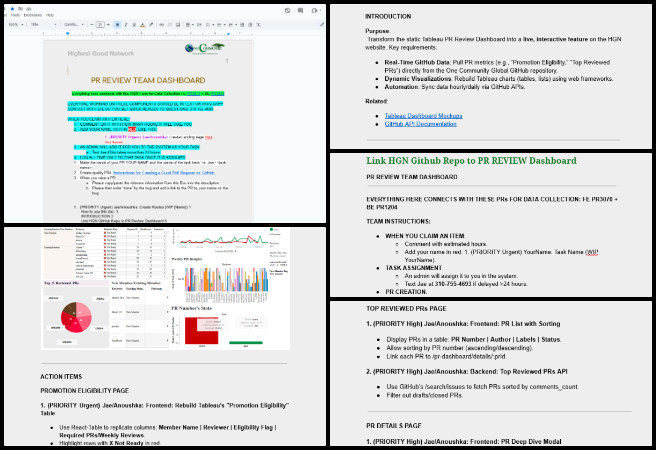
Govind Sajithkumar (Project Manager) continued focusing on Meta platform analytics and content management for the Facebook and Instagram channels. He managed key responsibilities related to social media management and administration by updating audience data for Facebook and Instagram, verifying data integrity, and refreshing spreadsheets and dashboards to reflect current metrics.He continued daily content management for Meta platforms by scheduling and uploading new posts, updating content details in the Open Source spreadsheet—including publishing times, content descriptions, and associated media files—and maintaining accurate records by entering post information into the documentation system. Govind also managed content rotation for Meta platforms by refreshing feeds and entering content metadata into the Open Source spreadsheet. In addition, he handled PR Review Team Management tasks by providing comments and feedback on team member documents, updating his WordPress site with the latest team summary and collage, updating the PR Review Team Table with the required information, and reviewing fellow administrators’ blog sites. This work supports One Community’s mission of an open source paradigm for ecological living. The following images show his work for the week.
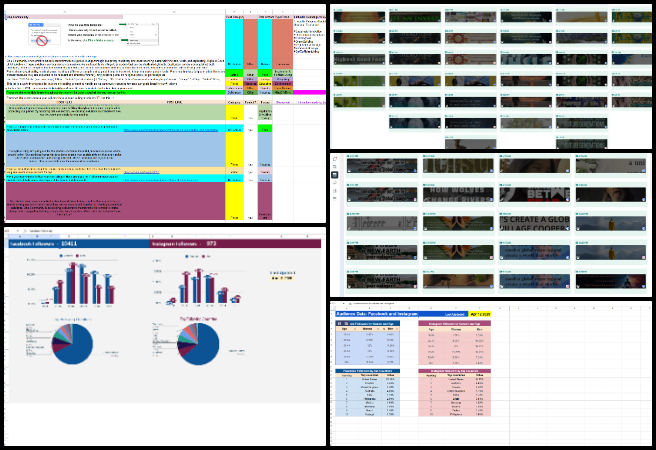
Hritvik Mahajan (Data Analyst) continued focusing on marketing and administrative tasks. He worked across multiple teams, contributing to marketing, software development, and administrative efforts. He spent several sessions posting high-engagement content in Twitter communities and maintained two tracking spreadsheets to support Marketing and Promotion efforts. For the HGN Software Development team, he reviewed multiple pull requests, addressed merge conflicts, and communicated with team members via Slack to follow up on required changes. In his administrative role, Hritvik provided feedback and comments on admin team member contributions for Blog #629 in the Step 4 document. Additionally, he filled in for a team member on the Moonfall team, prepared the weekly collage, and created the associated WordPress content. This work helps One Community’s mission of an open source paradigm for ecological living. The following images show his work for the week.
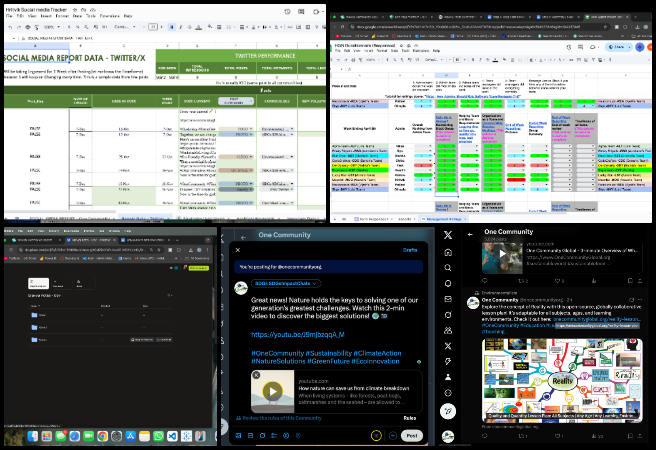
Jaiwanth Reddy Adavalli (Project Manager) continued developing the Job Applicants page and the Highest Good Network Phase 2 Dashboard. New graphs and wireframes were created, and many existing ones were updated. Action items were documented for most components to aid further work. As part of the PR review team, he reviewed the pull requests of the volunteer team assigned to him. This work helps One Community’s mission of an open source paradigm for ecological living. The following images show his work for the week.
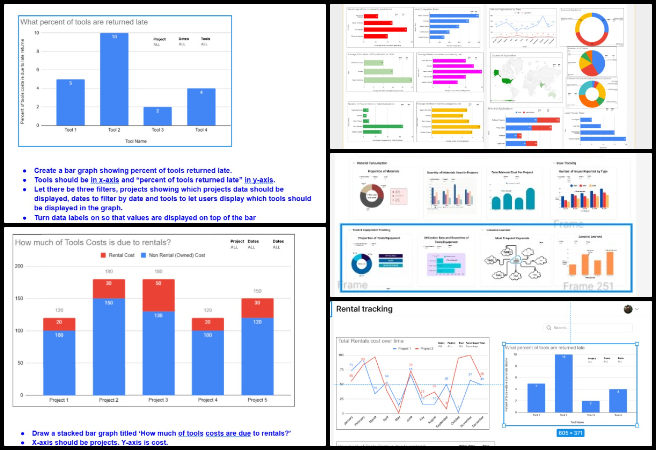
Raghav Dinesh Pamuru (Product Manager) continued work on coordinating with cross-functional teams to update the project roadmap and ensuring that all development tasks aligned with weekly goals. He attended project planning meetings to align timelines and deliverables for ongoing initiatives, updated Jira boards to reflect the current status of key tasks, and followed up with cross-functional teams to address blockers. He created a weekly performance dashboard using Google Sheets to track KPIs for the product team and shared findings with stakeholders. Additionally, Raghav participated in a session focused on refining internal documentation and aligning OKRs for the next quarter. This work helps One Community’s mission of an open source paradigm for ecological living. The following images show his work for the week.
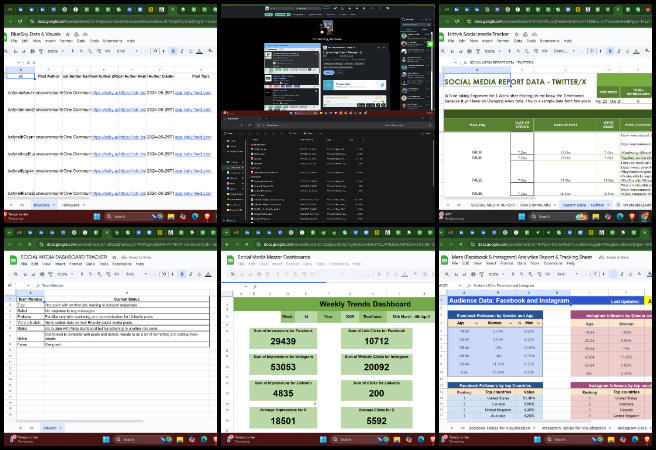
Yash Shah (Data Analyst and Team Administrator) continued his admin work and managed the social architecture component of the Highest Good Network software. He followed up with the developers assigned tasks for Phase 3 to obtain necessary approvals and assist in resolving ongoing conflicts. He also gathered feedback from developers regarding challenges faced during the approval process and conflict resolution. Based on the input received, additional hours were allocated to the task involving the implementation of Dark Mode, currently being handled by Nishita. He engaged directly on GitHub, tagging both the reviewers who had marked the pull requests as having conflicts and the respective task owners. This was done to prompt updates and encourage timely responses aimed at addressing and closing the issues. Additionally, Yash created a blog post for Dev Dynasty, organized the folder for the week, compiled a collage, and provided feedback on fellow volunteers’ blogs. This work helps One Community’s mission of an open source paradigm for ecological living. The following images show his work for the week.
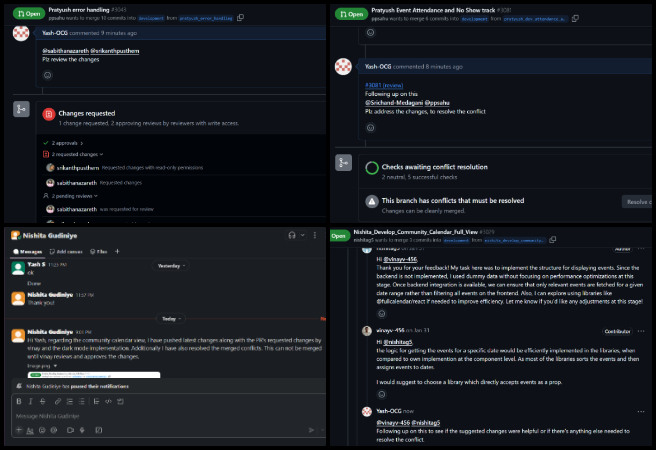
ADMINISTRATION TEAM
The Administration Team summary, covering their work administering and managing most of One Community’s ongoing process for an open source paradigm for ecological living, was managed by Bhakti Tigdi (Project Manager) and includes Anuneet Kaur (Administrator), Himanshu Mandloi (Engineering Project Manager), Jibin Joby (Data Analyst), Khushie Zaveri (Communication Strategist), Kishan Sivakumar (Administrative Assistant and Software Team Manager), Olawunmi “Ola” Ijisesan (Administrative and Management Support), Olimpia Borgohain (Data Analyst and Team Administrator), Preksha Welankiwar (Digital Marketing Manager), Rachna Malav (Data Analyst), Rishi Sundara (Quality Control Engineer and Team Administrator), Ryutaro Wongso (Economic Analyst and Team Administrator), Saumit Chinchkhandi (Administrative Assistant and Software Engineer), Vikas Pande (Software Administrator), and Vishnu Murali (Data Analyst). The Highest Good Network software is how we’ll be managing and objectively measuring our process for an open source paradigm for ecological living through our social architecture, construction, production, and maintenance processes.
This week, the Administration team contributed to a variety of coordination, training, technical documentation, content, and feedback tasks. Anuneet completed her training and started drafting content for the Community Conservation through Diversification blog. She familiarized herself with backend documentation, UI updates, task layout improvements, and social media automation efforts, while supporting team communication and feedback alignment. Himanshu continued managing the daily timelog review process, followed up with team members on inconsistencies, communicated issues to Jae, and reviewed technical resources related to Software Component Management. He also updated Dropbox summary images and published a blog emphasizing community conservation as part of an open source paradigm for Ecological Living. Jibin worked on data visualization and automation by collaborating with Vishnu on BlueSky scraping and developing a Python-based scraper. He also maintained daily posting to increase engagement and reviewed the housing team’s work, updated pages, and gave feedback. Khushie clarified her onboarding process with Jae, began work on the metric system campaign, drafted an outline for feedback, and reviewed submissions from six admins and one trainee. Kishan focused on senior admin tasks, including volunteer doc reviews, SEO page finalization, and edits based on peer feedback. His efforts contribute directly to an open source paradigm for ecological living.
Ola monitored PR reviewer output, updated reports for the Highest Good Network, and organized digital documentation and folders for the admin team. Preksha created LinkedIn and Threads content for April, reviewed PDFs for corrections, conducted two volunteer interviews, and updated the hiring workbook. Rachna focused on pending SEO pages and stayed current with internal updates, as there were limited opportunities for conducting interviews this week. Rishi created and merged blog content for Blog #629, optimized SEO, tested multiple PRs, followed up on completed submissions, and interviewed a candidate for a full-stack developer role. Ryutaro continued OC admin tasks by reviewing Binary Brigade’s work, offering feedback, progressing with cost analysis, and preparing a related blog and collage. Saumit managed PR workflows for volunteers A–E, tested frontend PRs across various modules, and updated his blog and WordPress page based on team feedback. Vikas followed up with contributors for bios, verified project data, updated the tracking sheet, and tested blog and PR submissions. He also worked with Sara on validation and SEO improvements. Vishnu reviewed Lucky Star team contributions, provided feedback, updated BlueSky dashboards using his new Python scraper, and posted regularly to maintain engagement and growth. This work contributes to One Community’s commitment to an open source paradigm for ecological living. See below to view images of their work.
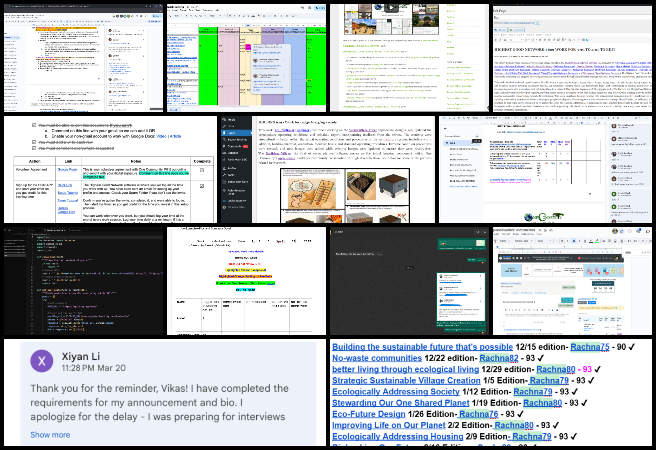
GRAPHIC DESIGN TEAM
The Graphic Design Team’s summary was managed by Harshitha Rayapati (Program Manager) and includes Junyuan Liu (Graphic Designer, UI/UX Designer) and Yafei (Jojo) Wu (Graphic/UIUX designer) covering their work on graphic designs for an open source paradigm for ecological living. This week, Junyuan worked on social media content by gathering images and testing various design options using design software. Three new social media images were completed through an iterative process, and initial work began on sourcing images and outlining design ideas for an upcoming piece. He also explored concepts for future image creation. In addition to social media content, Junyuan created a volunteer bio, designed supporting visuals, and updated a web page with edited information.
Yafei (Jojo) finalized revisions for four social media visuals—adjusting font weights for improved readability, standardizing visual element proportions for consistency, and aligning main visuals with supporting copy. She ensured brand guidelines were applied across all visuals, tracked changes throughout the process, and maintained a record of feedback and revisions. Final files were exported in the correct formats, with all specifications verified for platform use.See the Highest Good Society pages for more on how this contributes to an open source paradigm for ecological living. See the collage below to view some of their work.
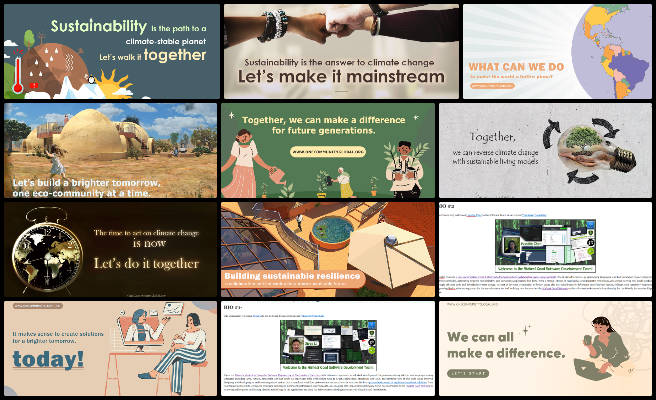
HIGHEST GOOD NETWORK PROGRESS
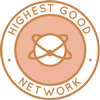 One Community is designing an open source paradigm for ecological living through open source Highest Good Network® software that is a web-based application for collaboration, time tracking, and objective data collection. The purpose of the Highest Good Network is to provide software for internal operations and external cooperation. It is being designed for global use in support of the different countries and communities replicating the One Community sustainable village models and related components.
One Community is designing an open source paradigm for ecological living through open source Highest Good Network® software that is a web-based application for collaboration, time tracking, and objective data collection. The purpose of the Highest Good Network is to provide software for internal operations and external cooperation. It is being designed for global use in support of the different countries and communities replicating the One Community sustainable village models and related components.
This week, the core team continued their work on the Highest Good Network PR testing and confirmed fixes for several issues. These included issue tracking warnings (#3257), updates to the LBLogin Page and LBDashboard (#3250), lint issues (#2847), the header and basic structure for the Phase 2 Summary Dashboard (#3258), a bug with the href link for the “One Community Work Breakdown Structure” (#3134), and updating account status on the User Management page without requiring a refresh (#2937). Additional fixes addressed creating different question sets (#2928 + 1167), adding toast notifications for adding and updating the Quick Setup title (#3262), correcting the People Report “Projects With Completed Hours” (#3266), CSS adjustments for the User Management and Dashboard pages (#3271), adding a spinning widget to the leaderboard during loading (#3086), and the issue of blue squares not being deleted (#1263). Unresolved issues include the disallowance of negative time logged (#3144), where the core team was able to type “-1” hours into the estimated box. They also replied to a volunteer regarding issue 3233, in which the QSC color did not change to red when an invalid team code was used, and they checked the issues for first and last day accuracy and auto-refresh on deactivation (PR3176 + PR3387) and for QSC color not changing (#3227), both of which are not yet on the Main branch. Additionally, the core team was unable to test the Job CC feature (#2924 + #1165) due to a lack of data on the Main branch, and they assigned tasks to two volunteers. These improvements represent incremental steps towards the realization of an open source paradigm for ecological living. See the Highest Good Society and Highest Good Network pages for more on how this relates to an open source paradigm for ecological living. The collage below shows some of their work.
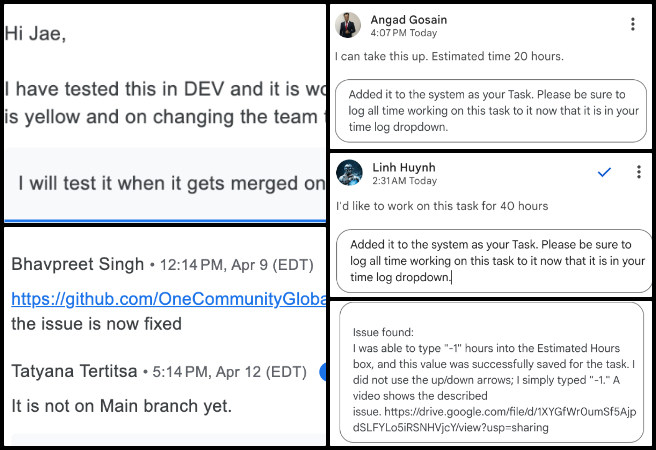
ALPHA SOFTWARE DEVELOPMENT TEAM
This week, the Alpha Team’s summary, covering their work on the Highest Good Network software, was managed by Lin Khant Htel (Frontend Software Developer) and the team includes Eve Ye (Volunteer Software Engineer Intern), Jiaqi Nie (Software Engineer), Nikita Kolla (Full Stack Developer), Rupa Rajesh Bhatia (Software Engineer), Sujith Reddy Sudini (Full-Stack Software Developer) and Vinay Vallabineni (Software Engineer). This software is a foundation of One Community tracking and management process for an open source paradigm for ecological living.
Lin reviewed and approved PR #1284 after learning about the code base and running tests on a local machine, with all 14 test cases passing as expected. He reached out to team members for consultation and reviewed Alpha team members’ weekly summaries, photos, and videos, while continuing to carry out Alpha Team management duties in support of an open source paradigm for ecological living. Eve enhanced the Pinterest OAuth integration by switching the OAuth type to ‘authorization_code’, enabling more secure and flexible connections with different Pinterest accounts. As part of an open source paradigm for ecological living, she implemented a “Connect to Pinterest” button and its associated functionality, allowing users to link their own Pinterest accounts directly through the platform. Tokens are stored securely, and refresh tokens ensure persistent connection—significantly improving the user experience and streamlining the Pinterest integration process.
Jiaqi worked on merging the notification endpoint and the user bid endpoint into a single endpoint as part of supporting an open source paradigm for ecological living. He also created a new data schema for listings and rewrote dependent APIs. Nikita worked on the “Fix Team Weekly Summaries on Darkmode” task, resolving legibility issues in dark mode and ensuring design consistency. Navigation was streamlined with React Router DOM, real-time form validation was added with Yup, a digital signature feature was implemented using HTML5 Canvas, and user preferences were preserved through localStorage—improving the overall user experience in alignment with an open source paradigm for ecological living.
Rupa analyzed team workflows and reviewed Lin’s project as part of her managerial training, contributing to an open source paradigm for ecological living. She collaborated with Vinay, Jiaqi, Nikita, and Eve to refine project summaries and enhance front-end functionality through collaborative UI reviews and agile planning. Sujith refined the HTML structure for the activity comments section, improving layout, spacing, responsiveness, and design coherence. His efforts supported future backend integration and enhanced interactivity and usability across the platform. Vinay worked on implementing dynamic scoring and ranking logic for the questionnaire dashboard. He updated the questionnaire file and completed 80% of the aggregate pipeline used to calculate average scores while filtering for team-member responses. These contributions ensured that an open source paradigm for ecological living was constructed. See below for some of the team’s work.
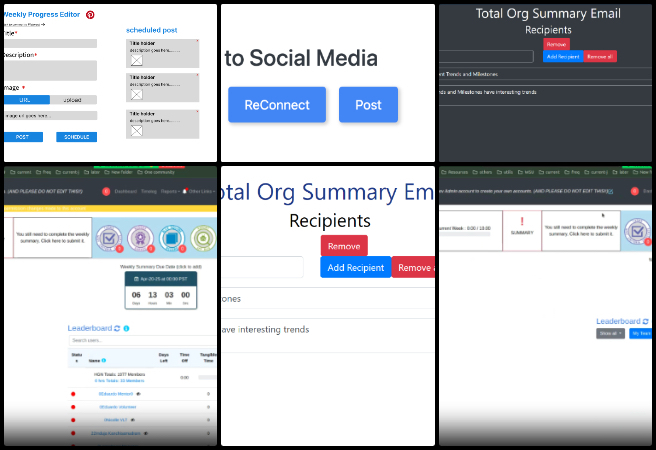
BINARY BRIGADE SOFTWARE DEVELOPMENT TEAM
The Binary Brigade Team’s summary overseeing advancements in the Highest Good Network software was managed by Aureliano Maximus (Volunteer Software Engineer) and includes Amalesh Arivanan (Software Engineer), Deepthi Kannan (Software Engineer), Geeta Matkar (Software Engineer), Jaissica Hora (Software Engineer), Nikhil Routh (Software Engineer), Samman Baidya (Software Engineer), Sidhartha Sunkasari (Software Engineer), Sriram Seelamneni (Software Engineer), Sunil Kotte (Full Stack Developer), Vasavi Vuppala (Software Engineer), and Wangyuan Chen (Software Engineer). The Highest Good Network software is how we’ll be managing and objectively measuring our progress in designing an open source paradigm for ecological living through our social architecture, construction, production, and maintenance processes.
This week, Amalesh resolved ESLint errors in the ‘src/components/common’ and ‘src/components/EmailSubscribeForm’ folders, which had generated around 100 issues, and addressed a hotfix for the TSA form that restricted users from accessing locked pages by manipulating the URL—an essential step in designing an open source paradigm for ecological living by ensuring system integrity. Aureliano focused on developing an auto-poster feature for Instagram and Threads as part of the HGN Software Development project, a tool aligned with designing an open source paradigm for ecological living. A new Facebook developer app was created and linked with a test Instagram account, allowing for Instagram credential-based authentication without requiring Facebook credentials. Deepthi completed and merged a fix for the leaderboard header responsiveness issue affecting high-resolution and large-screen devices by replacing the fixed 1024px breakpoint with a dynamic condition using window.innerWidth < window.screen.width * 0.75, improving accessibility in line with designing an open source paradigm for ecological living.
Geeta added a task description for a Blue Square assignee and submitted a pull request while continuing development on the social media analytics dashboard, an effort intertwined with designing an open source paradigm for ecological living, by collaborating with a teammate and adding new metric columns. Jaissica implemented a backend API endpoint that aggregates tools and equipment by availability status for a donut chart, with support for optional filters, reinforcing the data layer for designing an open source paradigm for ecological living, and built a second endpoint to populate filter dropdowns. Nikhil migrated standard CSS files to CSS Modules across 149 JSX files, updated import statements and class references, and resolved issues related to dynamic class handling, contributing to maintainable styling practices within the context of designing an open source paradigm for ecological living.
Samman completed Phase II and III tasks, including revising the navigation bar with role-based access and login wall, and generating downloadable PDFs of entire pages using jsPDF and html2canvas—key features supporting transparency and accessibility in designing an open source paradigm for ecological living. Sidhartha added functionality to view volunteer statistics based on date range and comparison filters on the total organization summary page and submitted frontend and backend pull requests that support data-driven decision-making in designing an open source paradigm for ecological living. Sriram implemented components for the Skills section on the UserProfile page and made progress on dashboard components including a polar chart and tabs with tooltips, while addressing feedback on previous pull requests—all integral to designing an open source paradigm for ecological living with modular, insightful interfaces.
Sunil completed development work on the Weekly Summaries Reports page with a focus on filtering by due date, prepared it for testing, and investigated a tab-switching issue—part of ongoing efforts in designing an open source paradigm for ecological living through effective user experience. Vasavi worked on linting and code style issues across multiple directories in the HGN Software Development project, using automated tools and manual fixes to clean up code in the Badge, UserProfile, and Projects components, a crucial aspect of sustainable maintenance in designing an open source paradigm for ecological living. Wangyuan implemented a backend module for managing Weekly Summary email recipients by creating a new Mongoose model, building controller functions for full CRUD operations, and registering Express routes, enhancing communication infrastructure in designing an open source paradigm for ecological living. See the Highest Good Society and Highest Good Network pages for more on how this relates to designing an open source paradigm for ecological living. View some of the team’s work in the collage below.
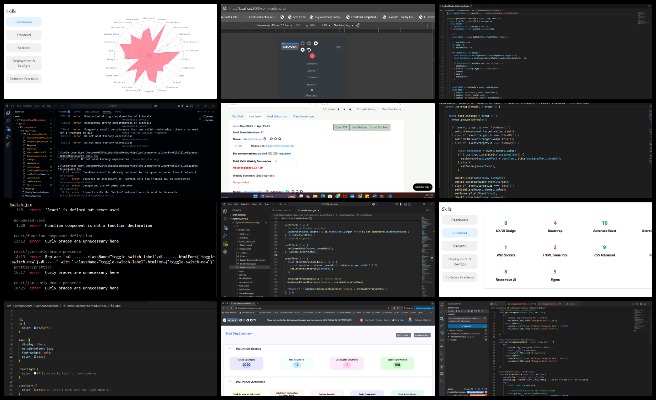
BLUE STEEL SOFTWARE DEVELOPMENT TEAM
The Blue Steel Team’s summary, presenting their work on the Highest Good Network software was managed by Sheetal Mangate (Software Engineer) and includes Humemah Khalid (Software Engineer/Backend Developer), Linh Huynh (Volunteer Software Engineer), Ramakrishna Aruva (Software Engineer), Sai Girish Pabbathi (Software Engineer), Sharan Sai Marpadaga (Software Developer) and Srichand Medagani (FullStack Developer). The Highest Good Network software is how we’ll be managing and objectively measuring our process for an open source paradigm for ecological living.
This week, Sai worked on tasks assigned by Jae, including implementing popup display functionality, adding date-based filtering, integrating icon usage, and managing profile page handling—all contributing to an open source paradigm for ecological living. He also completed the CSS for property components to support viewing properties on the same page as listings and spent additional time reviewing Airbnb’s user interface to understand interaction patterns. Linh addressed the gzip compression issue in the backend Express app by implementing a new solution using compression middleware with custom logic, including content-type filtering, handling the x-no-compression header, and disabling Brotli support. The updated logic was integrated into the startup file and main app configuration, verified locally, and submitted as pull request #1328.
Ramakrishna resumed work on a previously paused task by pulling the latest changes, resolving merge conflicts, confirming a successful build, and running test cases. He addressed an issue with team editing, submitted a pull request, and provided a separate urgent fix before returning to a backend task, where he began analyzing the MongoDB schema and evaluating modeling strategies—aligned with an open source paradigm for ecological living. Srichand worked on enabling the Suggestion Modal to open from the 404 error page by building a context-based modal trigger system using React Context and useRef, updating the routing structure, and integrating trigger registration within the SummaryBar component. He also implemented logic to redirect users from the 404 page to the dashboard with a query parameter that triggers the modal programmatically. The changes were tested locally, but due to lack of access, the updates have not yet been pushed to GitHub.
Humemah implemented the community members list feature for the HGN Questionnaire Dashboard backend, adding case-insensitive name filtering and sorting by name using a query parameter. She also added logic to extract frontend and backend skills from form responses and filtered members based on skill keywords. The API was tested using multiple combinations of query parameters to confirm expected behavior. Sharan worked on the Additional Notes and Work Experience section, completing most of the code and preparing to test the functionality, with further work planned to improve flexibility and add filters—all in support of an open source paradigm for ecological living. Sheetal submitted the code for “Development for Re-Engagement Strategies,” created front-end pull request PR#3409 and back-end pull request PR#1333, tested all functionality locally before submission, and resolved merge conflicts during the commit process. See the Highest Good Society and the Highest Good Network pages to learn more on how their work contributes to an open source paradigm for ecological living. See below to view images of their work.
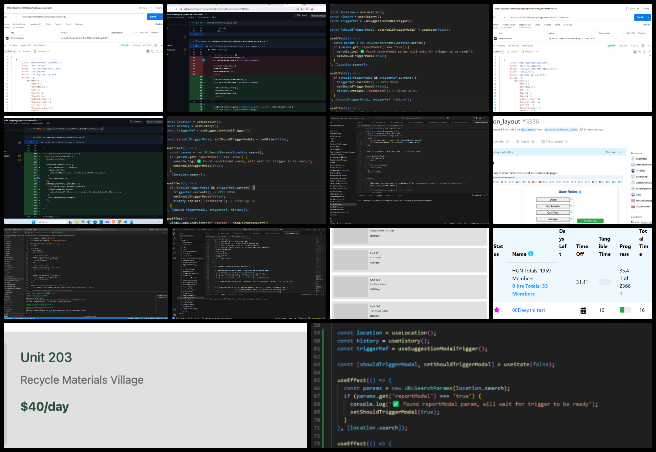
CODE CRAFTERS SOFTWARE DEVELOPMENT TEAM
The Code Crafters Team, covering their work on the Highest Good Network software, was managed by Sundar Machani (Software Engineer) and includes Anjali Maddila (Software Engineer), Ashrita Cherlapally (Software Engineer), Denish Kalariya (Software Engineer), Humera Naaz (MERN developer), Kshitij Gugale (Software Engineer), Pavan Swaroop Lebakula (Software Engineer), Pratyush Prasanna Sahu (Software Engineer), Rohith Nayakar (Full Stack Developer), Sai Moola (Software Engineer), Sanjeevkumar Hanumantlal Sharma (Software Engineer), and Xiaolei Zhao (Software Engineer). The Highest Good Network software is how we’ll manage and objectively measure our process for an open source paradigm for ecological living through our social architecture, construction, production, and maintenance processes.
This week, Sundar worked on upgrading Node.js from version 14 to 20 and React to version 18 for the HGN Software Development project, following an open source paradigm for ecological living. This caused compatibility issues, especially with Enzyme and webpack, leading to failing test cases. He updated webpack and replaced Enzyme with React Testing Library (RTL), addressed linting issues, and raised a pull request. Some dependencies were updated to support Node 20, and test case performance was improved. Initial research and functionality testing were completed, though some test failures remain and require further development. Sai worked on the backend for the initial hgnhelp modal. He completed the first phase by creating a schema for help categories, building a controller to handle task additions, and writing a script to populate the MongoDB database—all contributing to an open source paradigm for ecological living. He has now started working on capturing and storing feedback and may need assistance with the approach. Rohith completed the Weekly Summary dropdown task by fixing option visibility and making minor improvements before merging the pull request. He also started working on the BlueSquareStats component, using Chart.js’s DonutChart to render statistical data with responsive design in styled blue square icons, pushing forward an open source paradigm for ecological living.
Denish worked on identifying the cause of performance issues related to the Profile page by reviewing recent pull requests and examining changes to isolate the root cause of the delay. As part of an open source paradigm for ecological living, he documented the findings and prepared summaries of the analysis and work completed to support a smooth handover of responsibilities, as this is his final week on the project. Pavan worked on resolving timer panel spacing issues on the dashboard, analyzing pull requests related to layout problems, and adjusting the implementation to match the previous panel appearance without affecting other elements. Xiaolei worked on the backend logic for the Loss Tracking Line Graph feature, implementing the GET /api/materials/loss-tracking endpoint to retrieve material usage and waste data and calculate monthly loss percentages. Ashrita integrated a D3.js-based mind map visualization into the “Project Status” section of the Weekly Project Summary dashboard, using React Query to manage API calls and display loading states. Humera enhanced the checkTotalHrsInCat function to replace a lower badge with a higher one when a user’s hours meet or exceed the required threshold, implementing logic to handle badge replacement and removal, further contributing to an open source paradigm for ecological living.
Anjali worked on creating pagination by developing a new frontend page and integrating the MemberList component into the application. Kshitij worked on resolving formatting issues in the Add Task modal by adjusting styles and troubleshooting cached content problems related to Webpack or the browser. Sanjeevkumar began work on filtering by Date Range and Project Type APIs for financial summaries and started gathering information for the Phase 2 Summary Dashboard, which includes creating a pie chart for “Distribution of Labor Hours.” Pratyush implemented a backend using Node.js and MongoDB to support labor cost tracking and visualization, developing a data model and API routes for filtering and data aggregation, as well as adding key features like caching, pagination, and input validation. See the Highest Good Society and Highest Good Network pages for more on how this relates to an open source paradigm for ecological living. View some of the team’s work in the collage below.
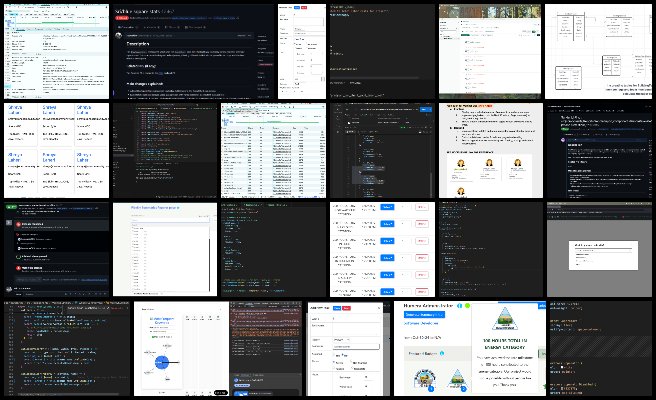
DEV DYNASTY SOFTWARE DEVELOPMENT TEAM
The Dev Dynasty Team’s summary, covering their work on the Highest Good Network software, was managed by Nishita Gudiniye (Software Engineer) and includes Dharmik Patel (Software Engineer), Honglin Chen (Software Engineer), Mohan Satya Ram Sara (Software Engineer), Jatin Agrawal (Software Engineer), Shraddha Shahari (Software Engineer), Tanvi Anantula (Software Engineer), Vaibhav Koladiya (Software Engineer), Vamsi Krishna (Software Engineer), Yu Yan (Software Engineer), and Zhifan Jia (Software Engineer). The Highest Good Network software is how we’ll manage and objectively measure our process for an open source paradigm for ecological living through our social architecture, construction, production, and maintenance processes.
Dharmik refined backend logic for team code outlier detection and warning notifications, updated flawed logic that misidentified valid assignments as outliers, traced and adjusted the relevant API response, reproduced the issue locally, and confirmed that the new logic accurately flags genuine anomalies. As part of our commitment to an open source paradigm for ecological living, Honglin reviewed and documented the status of over 80 frontend pull requests older than six months, categorized them as ready to merge, close, or requiring new developers, and compiled action items for PRs that need further development, conflict resolution, or test updates, with supporting media stored in Dropbox. Supporting an open source paradigm for ecological living, Jatin worked on creating the weekly email reminders as described by Jae, and on implementing badge auto-assignment for the Lead Team X+ badge. He also contributed to the messaging system for the LB platform. In addition, he worked on the project hours and task dashboard and got that pull request merged into the development branch. The pull request for badge auto-assignment was also merged as part of an open source paradigm for ecological living.
Mohan implemented permission-based access control for the HGN Skills Dashboard under PR #1327, replacing role-based checks with a permission flag system, added backend API endpoints for dynamic permission checks, integrated and tested the changes with various user setups, and uploaded supporting screenshots and walkthroughs to Dropbox. As part of contributing to an open source paradigm for ecological living, Nishita completed dark mode support for Phase 3 pull requests, including calendar view, event personalization insights, registration confirmation modal, event engagement tab, and event popularity analytics landing page, ensured theme consistency, and addressed feedback on the calendar view to meet design requirements. Shraddha continued analyzing the issue with the non-functional equipment list update button and investigated a bug related to featured badge selection, which could not be reproduced on the latest development build and will be retested later. Supporting an open source paradigm for ecological living, Tanvi tested PR #2895 for the HighestGoodNetworkApp, which addressed an issue with users not appearing in the User Management view after refresh, confirmed the fix using varied start dates and approved the PR after setting up the environment and verifying the UI behavior — another step toward an open source paradigm for ecological living.
Vaibhav reviewed and contributed to several high-priority pull requests including PDF generation for Total Org Summary and a TSA form URL hotfix, worked on backend support for the building issues feature in HGNRest, designed filtering logic for a horizontal bar chart, tested the implementation with dummy data, and reviewed frontend and backend PRs for code quality as part of advancing an open source paradigm for ecological living. He validated new chart logic in a local setup using reference materials, contributing to the broader mission of an open source paradigm for ecological living. Vamsi Krishna implemented a new permission to view task time extension counts, added the permission in both frontend and backend, assigned it to owner and admin roles, tested the feature with different roles, and submitted the code under a high-priority pull request. Yu began work on a high-priority task to add a compare date and optional date selection box to the Reports section. The feature will allow users to compare data from different years, with results shown side by side on the chart using large white numbers inside the bars. In cases of missing data, the selected date will display instead of NaN, supporting an open source paradigm for ecological living. The task is in progress and references a related PR. Zhifan worked on the task to display team members’ skills and contact information by updating a function to retrieve the current user and team data, modifying it based on schema clarifications, adding synthetic data for testing, and recording a supporting video for the pull request. See the Highest Good Society and Highest Good Network pages for more on how this relates to an open source paradigm for ecological living. View some of the team’s work in the collage below.
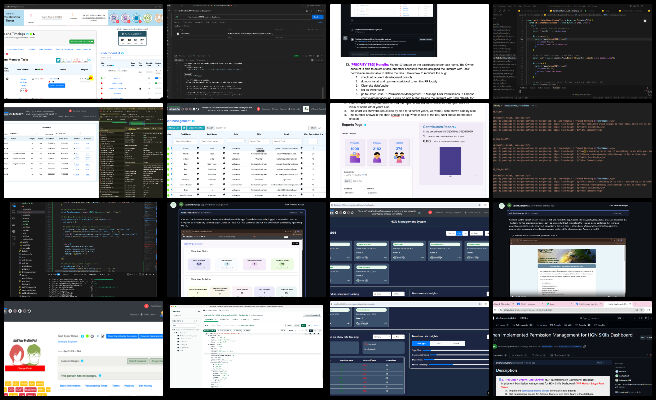
EXPRESSERS SOFTWARE DEVELOPMENT TEAM
The Expressers Team’s summary, covering their work on the Highest Good Network software, managed by Strallia Chao (Software Engineer), includes Ghouse Shahe Meera Ziddi Mohammad (Software Engineer Intern), Meenashi Jeyanthinatha Subramanian (Full Stack Developer), Rahul Trivedi (Software Engineer), Reina Takahara (Software Developer) and Shreya Laheri (Software Developer). The Highest Good Network software is how we’ll manage and objectively measure our process for an open source paradigm for ecological living through innovative software development, testing, and collaboration. This week, Ziddi worked on availability management APIs within the listing dashboard. He designed and implemented five APIs to manage bookings, appointments, and availability for each listing. He also developed a calendar database for each unit to track booked dates, pending reservations, and blocked-out dates, with support for automatic updates when bookings are confirmed or canceled.
Meenashi implemented webhook code to replicate Payment.Authorisation, Payment.Capture, and Payment.Voided events as part of an open source paradigm for ecological living. She integrated Socket.io for real-time bid updates and created a demonstration video. The current system uses a basic HTML page, and the team is considering replacing it with another front-end framework. Attempts to send sample messages via WebSockets conflicted with the TimerService, requiring changes to existing functionality. A comparison between WebSockets and Socket.io was made, and a BidDeadline model was created to support bidding logic with specific end-date conditions in alignment with an open source paradigm for ecological living. Rahul updated the skills value data by integrating dynamic backend responses, replacing static data. He incorporated the backend API into the frontend, improved UI responsiveness, made logic refinements, and added components for individual skill sections. He enhanced the skills chart for better usability, began the next phase of skills components, and added components for Frontend, Backend, DevOps, and Software Practices to support a modular interface in the HGN Questionnaire Dashboard, continuing progress on an open source paradigm for ecological living.
Reina worked on resolving display issues with the Leaflet map by adding a legend in the bottom left corner to indicate status color codes for each organization, as part of an open source paradigm for ecological living. She integrated MongoDB data to display as dots on the map and enabled hover previews and click popups for detailed organization information. Shreya created design pages for the main user page and addressed recurring issues caused by the new setup, supporting an open source paradigm for ecological living. She reconfigured VSCode, NPM, and GitHub for the HGN Questionnaire Dashboard task. At Jae’s request, Shreya added an action item to the document, reviewed it, and submitted updates.
Strallia resolved merge conflicts for PR 3332 related to the Global Volunteer Map on the Total Org Summary page, submitted weekly team reporting, and followed up with team members who had not completed their weekly tasks. She reviewed PR 3361 for the share-as-a-PDF feature on the same page, identified merge conflicts, provided feedback on styling issues, made commits to address those issues, removed unused stylesheets, and requested additional changes including disabled styling for the new button and overall page style adjustments. See the Highest Good Society and Highest Good Network pages for more on how this contributed to an open source paradigm for ecological living. See the collage below to view the team’s work.
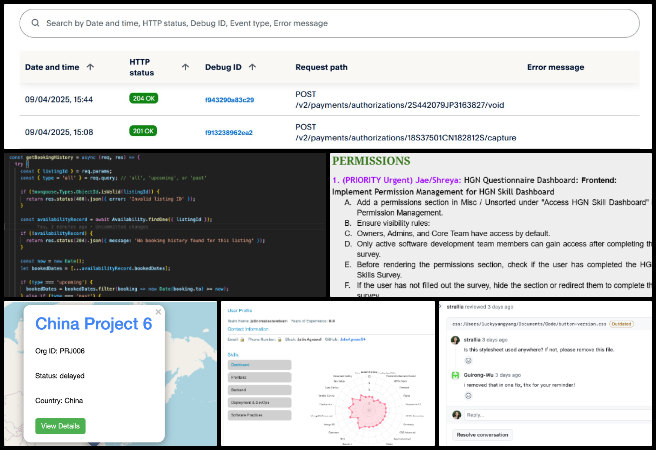
LUCKY STAR SOFTWARE DEVELOPMENT TEAM
The Lucky Star Team’s summary of the Highest Good Network software was managed by Anne Zhang (Software Engineer) and includes contributions from Barnaboss Puli (Volunteer Software Engineer), Dipti Yadav (Software Engineer), Harini Korda (Software Engineer), Ganesh Karnati (Software Engineer), Manusha Jyasta (Senior Software Engineer), Koushica Bosadi Ulaganathan (Software Engineer), Manoj Gembali (Software Engineer) and Vaibhavi Madhav Deshpande (Software Engineer). This improvement fostered a sense of ownership, much like that seen in an open source paradigm for ecological living where collective action drives progress.
This week, Barnaboss worked on completing the backend development for the Phase 2 Summary Dashboard Donut Chart as part of the HGN Software Development project. He addressed connection issues with MongoDB by using the terminal in Compass and confirmed successful database access. He created a new schema to store project status records, uploaded a custom JSON file to populate the database, implemented Redis caching for performance, and added support for filtering project data based on start and end dates. JWT-based authentication was integrated to restrict access to authorized users, and frontend code was modified to incorporate the backend updates before submitting a pull request. He also began fixing linting issues in the src/components/Dashboard directory. This improvement fostered a sense of ownership, much like that seen in an open source paradigm for ecological living where collective action drives progress.
Dipti worked on debugging issues related to project deletion when using the confirm button. She resolved an issue with duplicate modals by ensuring only one modal is rendered, and had corrected a frontend function reference that prevented successful deletion. She is currently working on adding user feedback to indicate the deletion process is underway. Ganesh worked on implementing the “Longest Open Issues” feature, building a functional horizontal bar chart using Recharts with dropdown filters for Projects and Dates. The component uses dummy data for now and includes tooltips and labeled axes. Harini addressed light and dark mode styling on the Reports Page, corrected the total tangible hours calculation, adjusted UI elements for consistency, updated dynamic CSS classes, and improved layout and responsiveness across devices. This improvement fostered a sense of ownership, much like that seen in an open source paradigm for ecological living where collective action drives progress.
Koushica fixed the User Management search bar issue caused by a prior pull request and began evaluating a transition to CSS Modules. She resolved several UI problems, updated bell notification logic to reflect the viewed user’s state, and verified the changes through testing. Manoj worked on the HGN Help Community page frontend, creating mock data, building a searchable and filterable member list, implementing sorting options, and applying dark theme styling. Manusha worked on the HGN Questionnaire Dashboard frontend, displaying skill and contact details of top-ranked community members, color-coding scores, and adding tooltips for private contact information. This improvement fostered a sense of ownership, much like that seen in an open source paradigm for ecological living where collective action drives progress.
Vaibhavi reviewed multiple pull requests to ensure adherence to project standards, tested updates, and continued refining her own pull requests for peer review. Anne worked on a bug related to saving blue square reasons and investigated issues specific to certain community roles. She also managed the Lucky Star team’s reviews and pictures of the week and answered team questions about One Community work and responsibilities. See the Highest Good Society and Highest Good Network pages for more on how this relates to an open source paradigm for ecological living. See the collage below to view the team’s work.
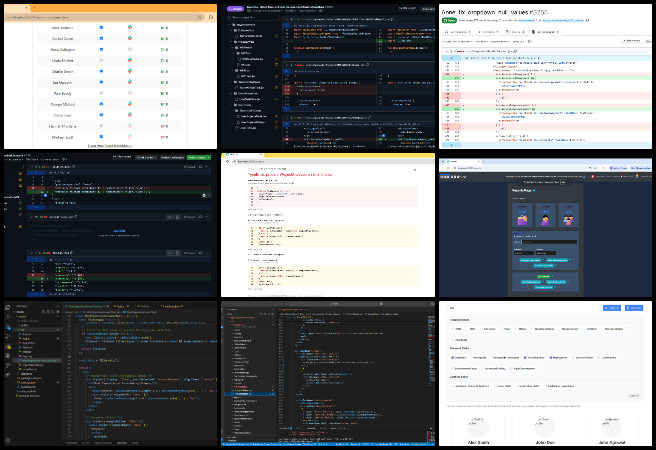
MOONFALL SOFTWARE DEVELOPMENT TEAM
The Moonfall Team’s summary, covering their work on the Highest Good Network software was managed by Newell Newell (Manager) and includes Yili Sun (Software Engineer), Swathi Dharma Sankaran (Software Engineer), Shashank Kumar (Software Engineer), Bhavpreet Singh (Software Engineer), Lalith Kumar Rajendran (Software Engineer), Rohith Kukkadapu (Software Engineer), Samhitha Gouru (Software Engineer), Sai Saketh Puchakayala (Software Engineer), Angad Anil Gosain (Volunteer Software Engineer), Akanksha Singh (Software Developer), and Sravya Kotra (Software Engineer).
This week, Sai worked on tasks assigned by Jae, including implementing popup display functionality, adding date-based filtering, integrating icon usage, and managing profile page handling. He also completed CSS updates for property components to support viewing properties alongside listings and spent time reviewing Airbnb’s interface to better understand interaction patterns. As part of advancing an open source paradigm for ecological living, Linh addressed a Gzip compression issue in the backend Express app by implementing compression middleware with custom logic—this included content-type filtering, handling the x-no-compression header, and disabling Brotli support. The changes were verified locally and submitted as Pull Request #1328.
Ramakrishna resumed work on a previously paused task, pulled the latest changes, resolved merge conflicts, confirmed a successful build, and ran test cases. He addressed a team editing issue, submitted a pull request, and provided a separate urgent fix before returning to a backend task involving MongoDB schema analysis and modeling strategies—aligned with the goals of an open source paradigm for ecological living. Srichand worked on enabling the Suggestion Modal to open from the 404 error page by building a context-based modal trigger system using React Context and useRef. He updated the routing structure and added trigger registration logic within the SummaryBar component. He also implemented redirection logic from the 404 page to the dashboard with a query parameter to programmatically trigger the modal. Although the changes were tested locally, they haven’t been pushed to GitHub due to access limitations.
Humemah implemented the community members list feature for the HGN Questionnaire Dashboard backend, enabling case-insensitive name filtering and name-based sorting using query parameters. She added logic to extract frontend and backend skills from form responses and filtered members based on skill keywords, confirming expected API behavior through multiple test combinations. Sharan worked on the Additional Notes and Work Experience section, completed most of the code, and began testing. Further refinements are planned to improve flexibility and introduce filters aligned with ecological living principles. Newell reviewed pull requests, proposed changes, implemented multiple NestJS endpoints with Zod-based schema validation, evaluated RBAC libraries (including CASL and access-control), and applied a new authorization strategy with CASL, including pagination support. See the Highest Good Society and Highest Good Network pages for more on how this contributed to an open source paradigm for ecological living. See below for a collage for the team’s work.
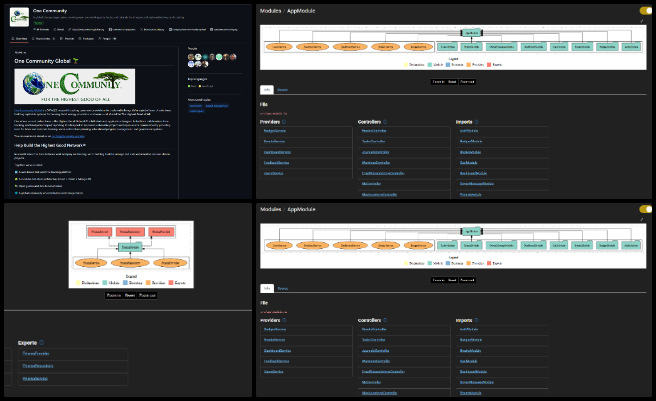
REACTONAUTS SOFTWARE DEVELOPMENT TEAM
Reactonauts’ Team’s summary, covering their work on the Highest Good Network software, was managed by Vijeth Venkatesha (Software Engineer) and includes Akshay Jayaram (Software Engineer), Ghazi Rahman (Software Engineer Intern), Gmon Kuzhiyanikkal (Software Engineer), Guirong Wu (Software Engineer), Haoyue Wen (Software Engineer), Keying Guo (Software Engineer), Khushi Jain (Software Engineer), Mohan Gopi Gadde (Software Engineer), Nikhil Pittala (Software Engineer), Pallavi Thorat (PR Team O-Sh), Peterson Rodrigues (Full-Stack MERN Stack Developer), Rishitha Mamidala (Software Engineer), Rishwa Patel (Software Developer), Saniya Farheen (Software Engineer), Sharadha Shivakumar (Software Engineer), and Xiyan Li (Software Engineer Intern). This software is a foundation of One Community tracking and management process for supporting the abundance of the earth.
This week, Akshay completed the time difference feature with PR#3393 (frontend) and PR#1320 (backend). He updated the backend to include the `timeZone` field and adjusted the frontend to show time differences using computed offsets. While contributing to an open-source paradigm for ecological living, he resolved issues by checking MongoDB, reviewing API responses, and clearing cached data. Ghazi worked with Sanjeev to resolve a missing Git branch created in a personal repository due to access issues, focusing on enabling API integration for dynamic data in Financial Summary cards. While contributing to an open-source paradigm for ecological living, he also helped the team troubleshoot a backend pull request issue related to the financials. Gmon fixed the main GitHub link issue, ran it locally, completed code reviews, and organized screenshots and a video in Dropbox. While contributing to an open source paradigm for ecological living, he coordinated with a teammate, focused on hiding member tasks when the team toggle is used, and reviewed the project’s architecture and features. Guirong completed the Fix Reports>Reports formatting task by making the “i” editable, adding a duplicate button, implementing a new filter, and fixing styling issues. While contributing to an open-source paradigm for ecological living, she resolved a PDF export issue in task 812 by replacing the canvas with DOM elements and adjusting the wait time and also identified an old front-end task for future work. Haoyue worked on front-end development for the Job Posting Page Analytics feature, improving styling, adding hover effects, adding tooltips with applicant insights, and refining axis labels. While contributing to an open source paradigm for ecological living, she also optimized the grid layout to improve data visualization.
Keying developed the backend for the Bidding Homepage feature by verifying end-to-end connectivity, reinforcing route-level access control, and identifying token validation issues under edge conditions using Postman; during this, she contributed to an open source paradigm for ecological living and flagged minor issues for improvement. Khushi refined the Figma mockup for the Specific Application Page Template: New Position Setup Page, implemented dark mode support for two interfaces, resolved console errors in the Phase 2 Summary Dashboard pie chart, and contributed to an open-source paradigm for ecological living, focusing on accessibility and error reduction. Mohan resolved a page freeze caused by project inactivity and updated the “AssignBadge” component and “badgeManagement.js” actions file to allow selecting one or multiple badges for one or multiple users, integrating these changes with existing logic and testing them for reliability as part of an open source paradigm for ecological living. Nikhil reviewed 14 pull requests involving front-end, back-end, and unit test updates, providing feedback on UI changes, API logic, and code structure to support feature integration and stability as part of an open source paradigm for ecological living. Pallavi enhanced the form builder functionality in a React application, improving the JobFormBuilder component, creating a QuestionEditModal for multiple question types, and aligning frontend and backend data models. She also developed an API structure for CRUD operations, integrated template management, and supported both local and server-side storage, contributing to an open source paradigm for ecological living.
Peterson fixed a bug on the JobCCDashboard page where dark mode did not apply correctly, causing the background color to remain white and the text to stay black. After the fix, the background now switches to dark shades, and text is displayed in white, ensuring proper functionality for dark mode and supporting an open-source paradigm for ecological living. Rishitha developed both the front-end and back-end components, creating a bar chart on the front end with the x-axis showing different issue types and the y-axis reflecting the number of issues, along with filters for issue type and year. She also added multi-select functionality to the dropdowns and implemented APIs on the backend to fetch and filter the data, supporting an open-source paradigm for ecological living. Rishwa Patel worked on implementing dynamic scoring and ranking logic for the HGN Questionnaire Dashboard and reviewed two pull requests: For PR 3270, she set up Facebook integration and verified functionality, while for PR 3186, she tested project member management and dark mode functionality, supporting an open source paradigm for ecological living. Saniya worked on designing graphs and pie charts in Figma to improve data visualization and updated the application statistics section by rearranging elements and ensuring design consistency, supporting an open-source paradigm for ecological living. This work helps One Community’s mission of an open source paradigm for ecological living.
Sharadha resolved merge conflicts in three pull requests related to front-end development, which involved the job posting component for search functionality, resource usage overview, and registration by event type and location. She updated the routes.js file to resolve conflicts, and an open-source paradigm for ecological living supported her ongoing work on the HGN Questionnaire Board frontend. Vijeth focused on team management by reviewing weekly summaries, images, and videos, responding to teammate queries, and analyzing system logs to investigate application slowdown issues, while an open-source paradigm for ecological living framed this coordination. This work helps One Community’s mission of an open source paradigm for ecological living. See the collage below to view the team’s work.
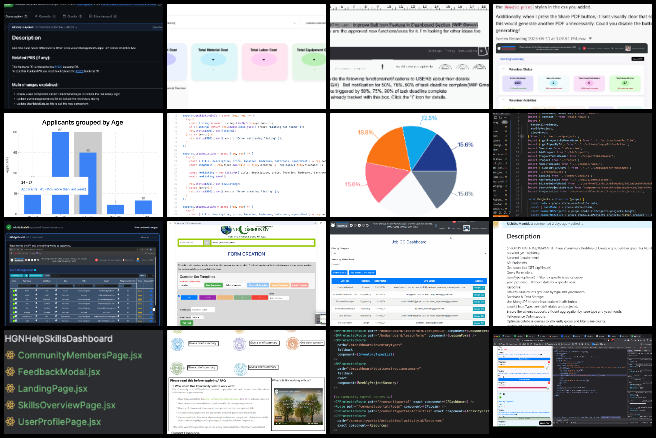
SKYE SOFTWARE DEVELOPMENT TEAM
Skye Team’s summary, covering their work on the Highest Good Network was managed by Olimpia Borgohain (Data Analyst and Team Admin) and Luis Arevalo (Software Engineer) and the team includes Prit Patel (Software Engineer), Sai Preetham (Full Stack Developer), Snehal Dilip Patare (Software Engineer) and Vikas Nomula (Software Engineer). The Highest Good Network software helps manage and objectively continue supporting the open source paradigm for ecological living focusing on social architecture, construction, production, and maintenance processes to build sustainable and thriving ecosystems. This solution is portable, scalable, and ideal for off-grid or sustainable living communities.
This week, Luis continued working on the feedback Jae requested regarding the current warnings. After debugging, he identified a solution for styling the warning component to ensure it is centered within the table component. He plans to finalize the styling adjustments so that it functions properly without interfering with the right component and will follow up with Jae on additional feedback. Prit reviewed documentation for a new task, identified a front-end task to work on, pulled the latest changes to the local repository, and created a new branch to begin development. Sai Preetham worked on analyzing the confirmation modal functionality required for changing user roles. He reviewed the logic behind custom permissions assignment, mapped the flow from role changes to scenarios where data loss could occur, and planned an implementation introducing a modal warning for permission mismatches during role updates. A new branch was created for this task, and he spent time analyzing the existing workflow to identify necessary changes. Additionally, he worked on the weekly summary, uploaded corresponding Dropbox images, and created a 10-minute walkthrough video responding to Jae’s questions about the previous tracking permissions task. This work helps One Community’s mission of an open source paradigm for ecological living
Snehal worked on the Schedule Social Media Post list, implementing the display of all scheduled posts, organized by their respective social media categories. She added functionality for posting scheduled content on Facebook, including popups for users to either post or delete a scheduled post. Vikas focused on the YouTube autoposter task, adding a button to upload videos in the announcements tab of the website. He implemented functionality to preview the uploaded video before posting it to YouTube and tested the feature to verify that both the video upload and preview features were functioning correctly. See below for the work done this week in support of an open-source paradigm for ecological living.
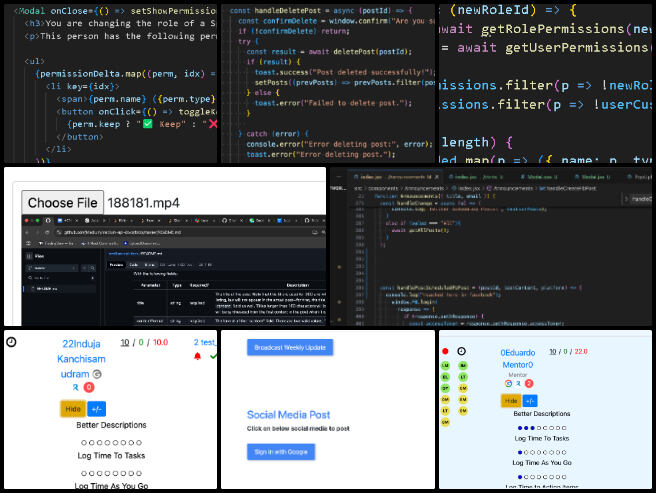
SOFTWARE PR REVIEW TEAM A-E
The PR Review Team’s summary for team members’ names starting with A-E and covering their work on the Highest Good Network software was managed by Saumit Chinchkhandi (Administrative Assistant and Software Engineer). The Highest Good Network software is a foundation of what we’ll be using to measure our results of an open source paradigm for ecological living. This week’s active members of this team were: Abdelmounaim Lallouache (Software Developer), Carl Bebli (Software Engineer), and Carlos Gomez (Full-Stack Software Developer). They assisted with the research for an open source paradigm for ecological living by reviewing all the Highest Good Network PRs (Pull Requests) shared in this week’s update. Learn more about how the Highest Good Network measures an open source paradigm for ecological living by exploring the Highest Good Network open-source hub. The collage below shows a compilation of the work from this team.
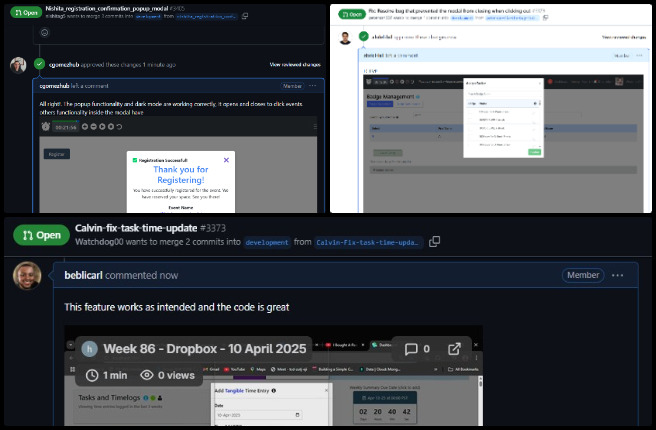
SOFTWARE PR REVIEW TEAM F-M
The PR Review Team’s summaries for team members’ names starting with F-M and covering their work on the Highest Good Network software was managed by Anoushka Hazari (Data Analyst). The Highest Good Network software is a foundation of what we’ll be using to measure our results as part of an open source paradigm for ecological living. This week’s active members of this team were: Greeshma Palanki (Software Engineer), Kurtis Ivey (Full Stack Developer), Kristin Hu (Software Engineer) and Julia Ha (Software Engineer). They reviewed all the Highest Good Network PRs (Pull Requests) shared in this week’s update. Learn more about how the Highest Good Network will measure and assist with an open source paradigm for ecological living in the Highest Good Network open source hub. The collage below shows a compilation of the work from this team.
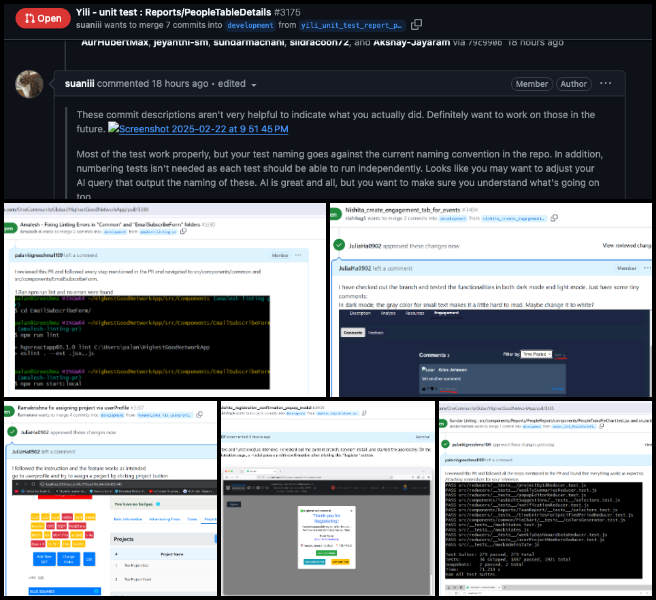
SOFTWARE PR REVIEW TEAM N-R
The PR Review Team’s summaries for team members’ names starting with N-R and covering their work on the Highest Good Network software was managed by Govind Sajithkumar (Software Project Manager). The Highest Good Network software is a foundation of what we’ll be using to measure our results of designing an open source paradigm for ecological living. This week’s active members of this team were: Nahiyan Ahmed (Full Stack Software Developer), Nathan Hoffman (Software Engineer) and Ravikumar Sripathi (Software Engineer). They reviewed all the Highest Good Network PRs (Pull Requests) shared in this week’s update. Learn more about how the Highest Good Network measures designing an open source paradigm for ecological living by exploring the Highest Good Network open-source hub. The collage below shows a compilation of the work from this team.
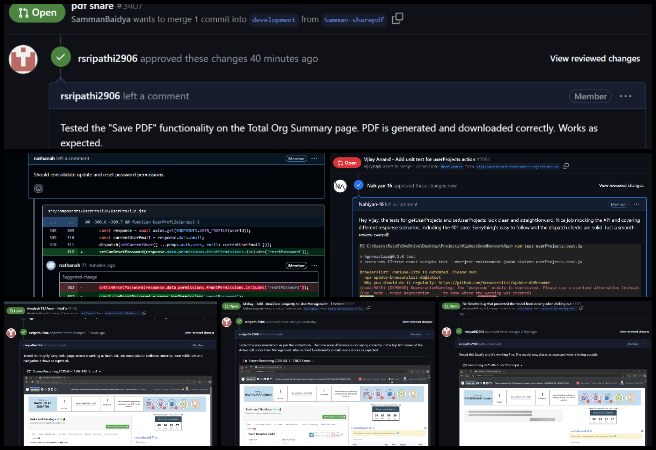
SOFTWARE PR REVIEW TEAM S-Z
The PR Review Team’s summaries for team members’ names starting with S-Z and covering their work on the Highest Good Network software was managed by Jaiwanth Reddy (Software Project Manager). The Highest Good Network software is a foundation of what we’ll be using to measure our results designing an open source paradigm for ecological living. This week’s active members of this team were: Siva Putti (Software Engineer), Sravan Kumar (Developer) and Yiyun Tan (Software Engineer). They reviewed all the Highest Good Network PRs (Pull Requests) shared in this week’s update. Learn more about how the Highest Good Network measures the results of designing an open source paradigm for ecological living by exploring the Highest Good Network open-source hub. The collage below shows a compilation of the work from this team.
AND WE PRODUCED THIS WEEKLY UPDATES BLOG – CLICK HERE TO SUBSCRIBE
FOLLOW ONE COMMUNITY’S PROGRESS (click icons for our pages)










INVESTOR PAGES
OVERVIEW | LOCATION | FUNDING
GET INVOLVED
DONATE | WAYS ANYONE CAN HELP | MEMBERSHIP
CLICK HERE FOR ALL PAST UPDATES
 One Community
One Community